Results 31 to 60 of 79
-
2019-03-15, 03:41 AM (ISO 8601)Titan in the Playground


- Join Date
- Apr 2009
- Location
- Germany
 Re: Under the Moons of Kaendor - A Wilderness of 90s Sword & Sorcery (D&D 5th Ed. /
Re: Under the Moons of Kaendor - A Wilderness of 90s Sword & Sorcery (D&D 5th Ed. /
Then I did something right. Though I came up with the idea some time before I first read anything about 4th edition. Was a bit disappointed of my cool idea now looking like an immitation.
Originally, I had always had the Spiritworld as a paralel dimension, but when I mixed things up for this new setting, I decided to just make it the default world and make the city states the actual exceptions.
Though I think I am actually drawing more from the Outlands from Planescape, which are the closest thing to a primary plane for starting adventures that that setting has. Plus a good helping from the Beastlands and Arborea.We are not standing on the shoulders of giants, but on very tall tower of other dwarves.
Spriggan's Den Heroic Fantasy Roleplaying
-
2019-03-15, 10:00 AM (ISO 8601)Bugbear in the Playground


- Join Date
- Aug 2010
 Re: Under the Moons of Kaendor - A Wilderness of 90s Sword & Sorcery (D&D 5th Ed. /
Re: Under the Moons of Kaendor - A Wilderness of 90s Sword & Sorcery (D&D 5th Ed. /
Imitation is the sincerest form of flattery?
Faerie is a very strong underlying concept in Western mythology. So it's not surprising multiple people have had this idea. 4E's Feywild is an awesome concept for an adventure location. It's one of the few pieces of 4E cosmology changes that I actually liked.
But an fully realized *campaign setting* for Fairy? The Feywild? The Summer Lands? Whatever you're going to call it? That? *THAT* is an accomplishment. This is good stuff you've created.
-
2019-03-15, 12:01 PM (ISO 8601)Titan in the Playground


- Join Date
- Apr 2009
- Location
- Germany
 Re: Under the Moons of Kaendor - A Wilderness of 90s Sword & Sorcery (D&D 5th Ed. /
Re: Under the Moons of Kaendor - A Wilderness of 90s Sword & Sorcery (D&D 5th Ed. /
I copy absolutely shamelessly. I can say with quite some certainty that there isn't a single original idea in the setting, and for every creature, NPC, or place I can tell you exactly where I copied it from.
And as you can see, this actually can work really well. I think the difference between originality and ripp-offs is that you take things from multiple sources and combine them in new ways. And don't just take a lot of things you've seen and thought was cool, throw them together, and call it a day. To give the new thing it's own identity, you need to select the things that work well together, and discard the things that don't really connect to your new things. I think it's better to only have a core of elements that are well interconected and form something that looks like a solid whole, instead of also having a bunch of loose bits and pieces that are simply there but don't have any relevance to that core.
There are a lot of Viking themed things that I think are really cool and I would greatly enjoy to use in a game. But they just don't fit into this setting. If I were to put them in, they would feel wrong and out of place. This is the reason why all the settings I make look so very similar. It really is still the same core idea, I just keep stripping off the parts that always get loose, and occasionally trying to add a new idea for a thing that I removed. But I think for every 10 ideas I remove, I only add 1 new one.
I think the main D&D source that influences this setting (and previous similar ones) is the 3rd ed. Manual of the Planes. I had that before I read the 2nd ed. Planescape material and in the appendix it has the Spiritworld and Realm of Faerie as alternative planes for custom settings that don't use only Great Wheel planes. Using Pandemonium and Gehenna as references for the underworld was a new idea.We are not standing on the shoulders of giants, but on very tall tower of other dwarves.
Spriggan's Den Heroic Fantasy Roleplaying
-
2019-03-15, 01:43 PM (ISO 8601)Bugbear in the Playground


- Join Date
- Jan 2016
- Location
- United States
- Gender

 Re: Under the Moons of Kaendor - A Wilderness of 90s Sword & Sorcery (D&D 5th Ed. /
Re: Under the Moons of Kaendor - A Wilderness of 90s Sword & Sorcery (D&D 5th Ed. /
Yeah I totally don't see it as an imitation of any kind, your world definitely has its own feel to it, but that sense of an overabundance of life, the dominance of nature, the fragile nature of the great works of man, all feel part of a faery environment.
I take a lot of inspiration from your work because I the sort of mythical, fairyland environments I think theyre perfect for D&D but I also want to wipe away that glossy veneer of happy gnomes and talking deer, I want to make the fairy world feel like more of an alien world.Last edited by Trask; 2019-03-15 at 01:49 PM.
-
2019-03-15, 01:49 PM (ISO 8601)Bugbear in the Playground


- Join Date
- Aug 2010
-
2019-03-15, 03:42 PM (ISO 8601)Titan in the Playground


- Join Date
- Apr 2009
- Location
- Germany
 Re: Under the Moons of Kaendor - A Wilderness of 90s Sword & Sorcery
Re: Under the Moons of Kaendor - A Wilderness of 90s Sword & Sorcery
I agree, this is perhaps the most challlenging part. It's one aspect of fantasy that mainstream D&D never really embraced since some early attempts in the 80s. Nymphs, pixies, satyrs, and unicorns is pretty much it. And the Sword & Sorcery stories that are the reference for dungeon crawling adventurers are usually much more concerned with demons or cosmic horror.
Another factor that I discovered while I had classes on ethnology and mythology in university is that in our modern society, there are basically two ways to think of nature. The "conservative" view that nature exists to serve humans and humans are meant to control and make use of it. And the "idealilstic" view that humanity is pretty bad while nature is good and pure. In either case, there is the assumption that humans are more powerful than nature and can control it. Whether they dominate it or leave it unrestrained is a question of whether we think it is ethical to do so.
But that's not the mindscape in which stories of frightening and dangerous spirits exist. These stories assume that humans are really at the mercy of nature. One of the big inspirtations for the metaphysics of this setting is one of my favorite quotes from fiction (actually said by an omnicidal cybernetic alien): "Rudimentary creatures of blood and dlesh, you touch my mind, fumbling in ignorance, incapable of understanding. There exists a realm so far beyond your own, you can not even imagine it." And my favorite line: "You exist, because we allow it. And you will end, because we demand it." (I first played Mass Effect right when I started dabling in Sword & Sorcery setting building, clearly not a coincidence.)
In the world of frightening nature spirits, this is the reality. All your existence is at the mercy of the gods and nature. All you can do is pray and hope, and maybe give yourself a bit more time by obeying absurd rules that the spirits insist on. "Stay on the path" is not just well meaning advice, but the rule that determines whether you live or die. Nature is terrifying and deadly, and if you have the option you stay close to home as much as possible. Tribal hunters may go out into the wilderness for weeks, but that doesn't mean they aren't worried. There are hundreds of rules of what you do and don't do, and how you do it, when you do it, and where you do it. And if you don't stick to them at every moment, you likely will be doomed. And the reality is, sometimes they don't come back. Most of the time it goes well, but if you have dozens of them hunting out in the wilderness for years and years, eventually everyone will know a couple of people who got killed by an animal or caught a fatal disease.
Modern Europeans don't know what natural wilderness is and have never seen it. When we go outside and think we're deep in a forest, we're really in the middle of a carefully managed tree plantation where all dangerous predators have gone extinct centuries ago. It's easier to find actual wilderness in North America, but even when you go to a national park, you're almost always with a safety net of park rangers being ready to rescue you with helicopters and rush you to a modern hospital in a couple of hours. That's not real wilderness as humans have experienced it for hundreds of thousands of years. It's a theme park.
Which of course is a wonderful thing! Not dying is fantastic. But I think when we want to have the fiction of going into actual natural wilderness, like premodern humans would have, then put all the dials up to max. Not just the feel good, pacifist tree hugger version.
Though I admit I am not fully sure how that looks in the practice of a campaign. I do have a good collection of big wandering monster tables. And I also want to be mercilessly pedantic about encumbrance, light, and vision. I have plans to put together some quick and dirty chart to determine the weather at the start of an encounter or reaching a site and then actually using penalties for wind, rain, snow, and fog. Though for cinematic effect, I will probably make them somewhat unreasonably dramatic. Going all the way back to the alternative fey planes from the MotP, I just love the idea of having a whole setting notorious for its extreme weather.We are not standing on the shoulders of giants, but on very tall tower of other dwarves.
Spriggan's Den Heroic Fantasy Roleplaying
-
2019-03-15, 04:42 PM (ISO 8601)Bugbear in the Playground


- Join Date
- Jan 2016
- Location
- United States
- Gender

 Re: Under the Moons of Kaendor - A Wilderness of 90s Sword & Sorcery
Re: Under the Moons of Kaendor - A Wilderness of 90s Sword & Sorcery
I think a lot of the blandness of fey in modern D&D is due to how D&D has obsessively separated and categorized all its supernatural elements. Fey cant take a page from Infernal or Lovecraftian books because then theyre not Fey™ anymore. But once you make your own setting and chuck that out the window, you can mix these elements to create unique things.
-
2019-03-16, 05:02 AM (ISO 8601)Titan in the Playground


- Join Date
- Apr 2009
- Location
- Germany
 Re: Under the Moons of Kaendor - A Wilderness of 90s Sword & Sorcery (D&D 5th Ed. /
Re: Under the Moons of Kaendor - A Wilderness of 90s Sword & Sorcery (D&D 5th Ed. /
I just checked, and of all the spirits in my bestiary, none are actually fey in the Monster Manual. They are plants, elementals, monstrosities, and one humanoid, fiend, and undead. And of the 20 demons, only 6 are originally fiends.
With creature types being cosmetic in 5th edition, this becomes very easy to switch out as fits the setting.We are not standing on the shoulders of giants, but on very tall tower of other dwarves.
Spriggan's Den Heroic Fantasy Roleplaying
-
2019-03-17, 11:35 AM (ISO 8601)Titan in the Playground


- Join Date
- Apr 2009
- Location
- Germany
 Re: Under the Moons of Kaendor - A Wilderness of 90s Sword & Sorcery (D&D 5th Ed. /
Re: Under the Moons of Kaendor - A Wilderness of 90s Sword & Sorcery (D&D 5th Ed. /
I am now very strongly considering to remove yugoloths from the setting. I love yugoloths and want to use them, but I think this is indeed one of those cases where they don't fit the rest of the setting. I admit that demons are something I have never been happy with at any stage of my worldbuilding efforts. It always felt wrong.
I remembered that many many years ago, I was considering the idea of creating something based on the quori of Eberron. These are the closest thing in D&D to my vague idea how demons should feel like, and perhaps in fantasy in general. More of a formless presence than creatures, that are encountered in the wild as possessed animals and sorcerers. I think the demons from Dragon Age also had an influence there.
I can still see canoloths, mezzoloths, and perhaps nycaloths work as creatures of the Realm Below, but more as something similar to aboleths and grells, distinctively different from actual demons.
Some of my favorite fantasy monsters are abominations from Dragon Age, the Inspired from Eberron, and the Eternals from Spears of the Dawn. I could see the god kings Anataruk and Sulat and the oldest Sorcerer Lords of Ven Marhend actually being something like that. And the naga sorcerers know, which is why they want to destroy them.
Or maybe demons give powers to warlocks in the hope of that they become powerful enough to be possessed. I like where this is going...
Last edited by Yora; 2019-03-17 at 11:43 AM.
We are not standing on the shoulders of giants, but on very tall tower of other dwarves.
Spriggan's Den Heroic Fantasy Roleplaying
-
2019-03-18, 11:28 AM (ISO 8601)Titan in the Playground


- Join Date
- Apr 2009
- Location
- Germany
 Re: Under the Moons of Kaendor - A Wilderness of 90s Sword & Sorcery (D&D 5th Ed. /
Re: Under the Moons of Kaendor - A Wilderness of 90s Sword & Sorcery (D&D 5th Ed. /
Potions
Hemra Potion
This potion is made from the boiled leaves of the hemra plant and some simple additional ingredients. The potion is a slightly bluish green and heals 2d4+2 hit points. Partiqularly high quality potions have a deep blue color and heal 4d4+4 hit points.
Rusan Oil
This potion is an oil made from the leaves of the rusan shrub. A full dose causes unconsciousness for 1d4 hours, while drinking a third of that amount put a person into a hazy state that gives an advantage on saving throws against being frightened and disadvantage on all Dexterity and Wisdom checks, which lasts for 1 hour.
Valkar Seeds
Eating one of these seeds gives advantage on saving throws against exhaustion for 6 hours. Eating another within 24 hours requires a DC 15 Constitution saving throw or it causes the poisoned condition instead.
Satak Potion
This vile potion is made from a mushroom found in Venlad. For 6 hours it gives advantage on Strength and Constitution ability checks and saving throws, and disadvatage on Wisdom and Charisma ability checks and saving throws.
When the effect ends, the drinker takes 1d4 points of poison damage and is poisoned for 6 hours.
Tamgut Potion
This potion is made from specially prepared berries from the Tamgut shrub of the Wyvern Mountains, mixed with rusan oil. It causes incapacitation for 6 hours, at the end of which a DC 15 Wisdom check must be made. If successful, the drinker gets the effect of a divination spell.
I don't see a lot of situations in which a character would want to drink rusan oil on an adventure, but why not. Valkar seeds might actually be really useful for wilderness travel adventures. Satak potions could be tempting, but I also see a lot of players never touching that stuff.
Last edited by Yora; 2019-03-18 at 11:49 AM.
We are not standing on the shoulders of giants, but on very tall tower of other dwarves.
Spriggan's Den Heroic Fantasy Roleplaying
-
2019-03-19, 09:46 AM (ISO 8601)Titan in the Playground


- Join Date
- Apr 2009
- Location
- Germany
 Re: Under the Moons of Kaendor - A Wilderness of 90s Sword & Sorcery (D&D 5th Ed. /
Re: Under the Moons of Kaendor - A Wilderness of 90s Sword & Sorcery (D&D 5th Ed. /
Some thoughts of the day: Sight and hearing
 I had a really cool idea, but I've come to think that it really doesn't work. When I was playing Bloodborne, I really like the Insight mechanic. If you see weird things and consume Madman's Knowledge, you start to see things in the environment that are too alien for normal minds to perceive. The downside is that you become much weaker to resist insanity attacks. The whole game and its mythology is based around a theme of eyes and sight, and invisible truths. I thought it's interesting that our culture puts so much emphasis on sight, to the point that the word for getting telepathic information from supernatural sources is vision. And I really wanted to make a setting in which the people conceptualize the gaining of supernatural information through sound. It turned out to be quite tough to even come up with a vocabulary for such a thing that doesn't use words related to sight.
I had a really cool idea, but I've come to think that it really doesn't work. When I was playing Bloodborne, I really like the Insight mechanic. If you see weird things and consume Madman's Knowledge, you start to see things in the environment that are too alien for normal minds to perceive. The downside is that you become much weaker to resist insanity attacks. The whole game and its mythology is based around a theme of eyes and sight, and invisible truths. I thought it's interesting that our culture puts so much emphasis on sight, to the point that the word for getting telepathic information from supernatural sources is vision. And I really wanted to make a setting in which the people conceptualize the gaining of supernatural information through sound. It turned out to be quite tough to even come up with a vocabulary for such a thing that doesn't use words related to sight.
I think this might actually be doable, but it also really doesn't fit together with my obsessive love for magic lanterns and masks. These are inherently based on the idea of concealing faces, having magic cover your eyes, and magic light illuminating concealed things.
I also have this cool idea that spirits don't really understand faces and are completely fooled by masks. This just doesn't make any sense if spirits perceive the world by listening to the minds of living things.
It was a fun idea, but even at its best it never got much furthern than a gimick, and there are so many great things I really want to do with sight. I really think it needs to be ditched.
However, the one really good idea I had is that divinations don't work by having spirits show you images in your mind, but communicating the information by putting ideas and concepts in your thoughts. And you hear these things by concentrating on the sounds of the environment. I think this still works without being missmatched with all the masks and lanterns stuff.
After all, my favorite magic-babble quote is "Your eyes can deceive you. Don't trust them."
Perhaps the spirits understand this and try to avoid using sight whenever they can. But even with their ability to hear thoughts emotions, they are not able to perceive the world as it really is. Perhaps true reality is a mystery even to the spirits of nature. They are just much less easily fooled by illusions, with the notable exception of identifying faces.We are not standing on the shoulders of giants, but on very tall tower of other dwarves.
Spriggan's Den Heroic Fantasy Roleplaying
-
2019-03-19, 03:59 PM (ISO 8601)Ettin in the Playground

- Join Date
- Jun 2015
 Re: Under the Moons of Kaendor - A Wilderness of 90s Sword & Sorcery (D&D 5th Ed. /
Re: Under the Moons of Kaendor - A Wilderness of 90s Sword & Sorcery (D&D 5th Ed. /
you do not need magic for your eyes to fool you.
There is something called optic illusions which corresponds to how vision is just your brain trying to confuse you in thinking your sight does more than what it really does(like the stopped clock illusion being your brain telling you "while your eyes were moving you were still seeing and for proof I will retconjure your memory to make it contain images you did not have at that moment").
-
2019-03-19, 04:14 PM (ISO 8601)Titan in the Playground


- Join Date
- May 2016
- Location
- The Lakes
 Re: Under the Moons of Kaendor - A Wilderness of 90s Sword & Sorcery (D&D 5th Ed. /
Re: Under the Moons of Kaendor - A Wilderness of 90s Sword & Sorcery (D&D 5th Ed. /
Last edited by Max_Killjoy; 2019-03-19 at 04:16 PM.
It is one thing to suspend your disbelief. It is another thing entirely to hang it by the neck until dead.
Verisimilitude -- n, the appearance or semblance of truth, likelihood, or probability.
The concern is not realism in speculative fiction, but rather the sense that a setting or story could be real, fostered by internal consistency and coherence.
The Worldbuilding Forum -- where realities are born.
-
2019-03-19, 04:29 PM (ISO 8601)Ettin in the Playground

- Join Date
- Jun 2015
-
2019-03-19, 04:36 PM (ISO 8601)Titan in the Playground


- Join Date
- Apr 2009
- Location
- Germany
 Re: Under the Moons of Kaendor - A Wilderness of 90s Sword & Sorcery (D&D 5th Ed. /
Re: Under the Moons of Kaendor - A Wilderness of 90s Sword & Sorcery (D&D 5th Ed. /
Human senses are terrible in general. We basically have no sense of smell. The only things we can smell are fire and rotting meat, and only if we stand right next to it downwind.
I had this vague idea that reality is really all magical energy, with people perceiving only a very simple approximation. But that's really way too needlessly abstract for a D&D campaign. It's not something that you can really go into as a group sitting at a table with dice.
I think I am happy enough with establishing that all physical sensations are distorted and that spirits and wizards use all kinds of tricks to fool the senses and peek past each other's illusions. I had already established for myself when customizing the spell lists that enchantments and illusions are basically the same kind of magic. Illusions are not actual holograms in space, but exist only in the mind. Enchantment, illusion, divination, and conjuration are the main focus of wizards in this setting.
All the magic masks and lanterns are the tools of information warfare with the purpose to fool your opponents and see through their deceptions. But even then, the best you can hope for is too see through deliberate lies. That still doesn't let you perceive true reality with your senses. The mysteries of the cosmos exist in the realm of pure thought and magic. Which is one of the reasons why I want to ditch yugoloths. They have an actual physical form.We are not standing on the shoulders of giants, but on very tall tower of other dwarves.
Spriggan's Den Heroic Fantasy Roleplaying
-
2019-03-19, 05:38 PM (ISO 8601)Titan in the Playground


- Join Date
- May 2016
- Location
- The Lakes
 Re: Under the Moons of Kaendor - A Wilderness of 90s Sword & Sorcery (D&D 5th Ed. /
Re: Under the Moons of Kaendor - A Wilderness of 90s Sword & Sorcery (D&D 5th Ed. /
As what might be an interesting aside, the sense of smell is highly variable across humans -- some people have a sense of smell far more broad or sensitive than you describe. Check here for starters -- https://www.sciencedaily.com/release...1208133402.htm
As for the general reliability of senses, consider that a creature whose senses "lie" to it is at a distinct survival disadvantage.It is one thing to suspend your disbelief. It is another thing entirely to hang it by the neck until dead.
Verisimilitude -- n, the appearance or semblance of truth, likelihood, or probability.
The concern is not realism in speculative fiction, but rather the sense that a setting or story could be real, fostered by internal consistency and coherence.
The Worldbuilding Forum -- where realities are born.
-
2019-03-19, 06:02 PM (ISO 8601)Ettin in the Playground

- Join Date
- Jun 2015
 Re: Under the Moons of Kaendor - A Wilderness of 90s Sword & Sorcery (D&D 5th Ed. /
Re: Under the Moons of Kaendor - A Wilderness of 90s Sword & Sorcery (D&D 5th Ed. /
It depends on the situation.
For example it is not productive for an animal to be stressed each time it rotate its head because it stops seeing for an instant so the animal thinking it was still seeing is not a negative trait.
while not seeing a predator or prey is a negative trait because the animal is more likely to get eaten or to starve.
-
2019-03-19, 06:09 PM (ISO 8601)Titan in the Playground


- Join Date
- May 2016
- Location
- The Lakes
 Re: Under the Moons of Kaendor - A Wilderness of 90s Sword & Sorcery (D&D 5th Ed. /
It is one thing to suspend your disbelief. It is another thing entirely to hang it by the neck until dead.
Re: Under the Moons of Kaendor - A Wilderness of 90s Sword & Sorcery (D&D 5th Ed. /
It is one thing to suspend your disbelief. It is another thing entirely to hang it by the neck until dead.
Verisimilitude -- n, the appearance or semblance of truth, likelihood, or probability.
The concern is not realism in speculative fiction, but rather the sense that a setting or story could be real, fostered by internal consistency and coherence.
The Worldbuilding Forum -- where realities are born.
-
2019-03-19, 06:41 PM (ISO 8601)Ettin in the Playground

- Join Date
- Jun 2015
 Re: Under the Moons of Kaendor - A Wilderness of 90s Sword & Sorcery (D&D 5th Ed. /
Re: Under the Moons of Kaendor - A Wilderness of 90s Sword & Sorcery (D&D 5th Ed. /
https://en.wikipedia.org/wiki/Chronostasis
or stopped clock illusion.
sorry I was wrong it is not head rotation but quick eye movement.Last edited by noob; 2019-03-19 at 06:42 PM.
-
2019-03-20, 08:32 AM (ISO 8601)Titan in the Playground


- Join Date
- Apr 2009
- Location
- Germany
 Re: Under the Moons of Kaendor - A Wilderness of 90s Sword & Sorcery (D&D 5th Ed./E6
Re: Under the Moons of Kaendor - A Wilderness of 90s Sword & Sorcery (D&D 5th Ed./E6
Armor
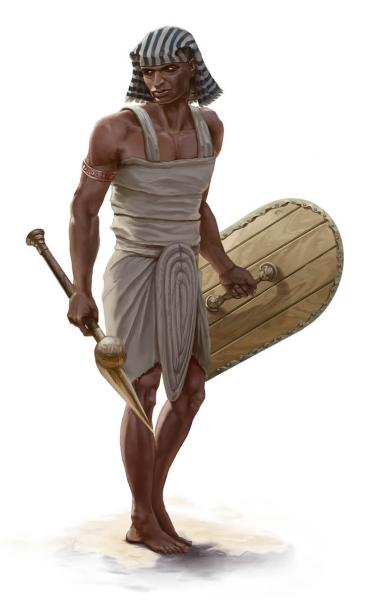
Shield: AC +2, 50 sp, weight 1.
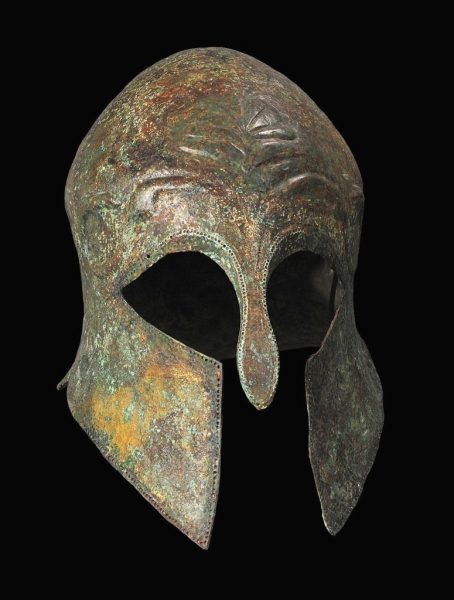
Helmet: AC 11 + Dex, 100 sp, weight 1.
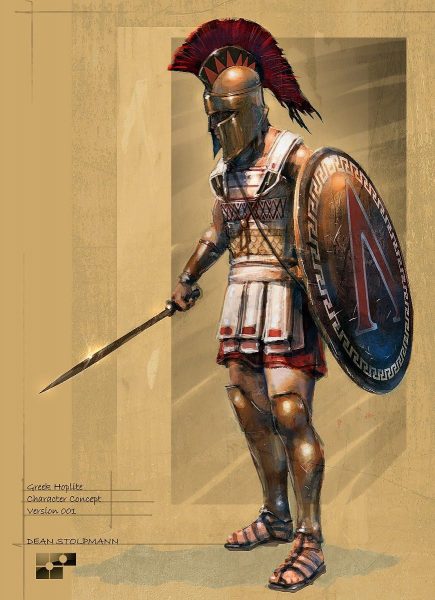
Light Armor: AC 12 + Dex, 450 sp, weight 2.
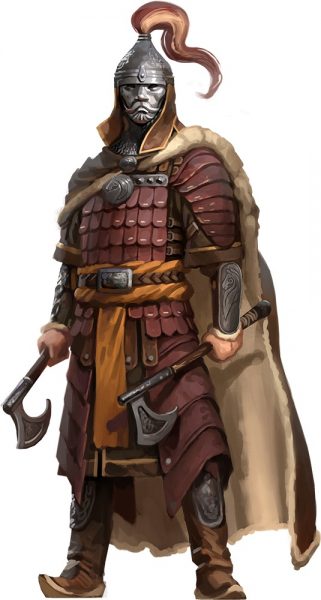
Medium Armor 1: AC 14 + Dex (max. +2), Stealth disadvantage, 500 sp, weight 2.
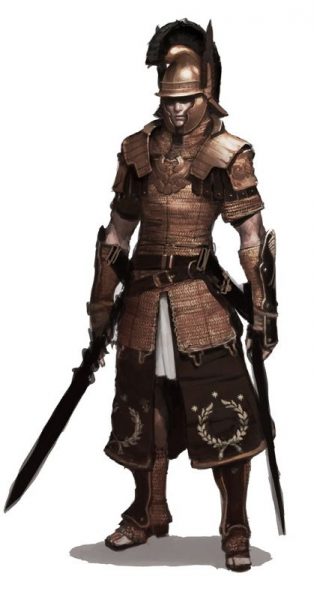
Medium Armor: AC 15 + Dex (max. +2), Stealth disadvantage, 2,000 sp, weight 2.
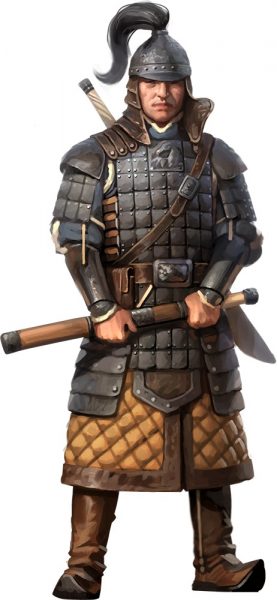
Heavy Armor 1: AC 16, Stealth disadvantage, 750 sp, weight 3.
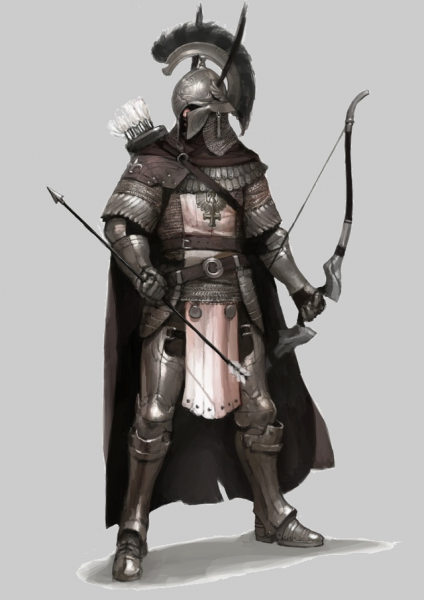
Heavy Armor 2: AC 17, Stealth disadvantage, 3,000 sp, weight 3.
I've mostly been using the stats for armor from the PHB, except for the price for breastplate which doesn't make any sense, beside it being obviously the best armor in the game.Last edited by Yora; 2019-03-23 at 07:56 AM.
We are not standing on the shoulders of giants, but on very tall tower of other dwarves.
Spriggan's Den Heroic Fantasy Roleplaying
-
2019-03-22, 11:42 AM (ISO 8601)Titan in the Playground


- Join Date
- Apr 2009
- Location
- Germany
 Re: Under the Moons of Kaendor - A Wilderness of 90s Sword & Sorcery (D&D 5th Ed./E6
Re: Under the Moons of Kaendor - A Wilderness of 90s Sword & Sorcery (D&D 5th Ed./E6
House Rules
These modifications aren't really part of the setting, but they might give some insight in how I intend the setting to be played.
While 5th Edition Dungeons & Dragons is overall a very solid system, it's procedures for exploration and travel are somewhat lacking. Most of these shortcommings can be taken care of by simply taking the relevant mechanics straight from the 1981 Basic/Expert rules. The Encumbrance rules is adapted from Papers & Pecils, the Point-Map from Hill Cantons, and the travel tracking mechanic purely my own creation.
Time
A combat round corresponds to roughly 6 seconds.
An exploration turn corresponds to something about 10 minutes on average. Searching a large room or a group of small rooms, takes one turn. Fights and their immediate aftermath take up one full turn regardless of how many rounds they take. Spell durations of 1 minute are increased to a full exploration turn, and all light sources, potions, and other effects are tracked in turns.
Encounters
Random Encounters: Checked at the beginning of every exploration turm. An encounter happens on a roll of a 1, with the chance of an encounter being determined by the size of the die.
Encounter Distance: In indoor environments, encounters usually start when either the party or the encountered NPCs or creatures come around a corner or reach a door. Outdoors, the distance at which an encounter starts depends on the environment.
Terrain Distance Forest, Jungle 2d6 x 10 yards Swamp 3d6 x 10 yards Heath, Moor, Mountains, Plains 4d6 x 10 yards Lake, Sea 4d6 x 10 yards
Reaction: If the encountered creatures or NPCs don't have an automatic response to the party based on the circumstances of the encounter, their reaction is determined by a Reaction Roll.
2d6 Initial Reaction 2 Hostile and immediate attack 3-5 Unfriendly and tries to scare party away 6-8 Uncertain and waits what the party does 9-11 Indifferent and wants to avoids conflict 12 Friendly and offers assistance
Encumbrance
The weight of any items is not tracked in pounds but in encumbrance slots. A character can carry an unencumbered load of items up to its Strength score, an encumbered load up to 2 times its Strength score, and a heavily encumbred load up to 3 times its Strength score. Particularly heavy items like armor can count as 2 items or more. Items under 1 pound count don't count towards encumbrance.
Speed Item Limit Effects Unencumbered STR x 1 - Encumbered STR x 2 Speed -10 Heavily Encumbered STR x 3 Speed -20, Disadvanntage to all Str, Dex, and Con rolls Push, drag, lift Str x 6 -
To track the amount of items, each character's inventory has numbered lines with only one item written per line, with additional unnumbered lines for items of insignificant weight. To instantly see the character's current encumbrance, marks can be made at the lines where the thresholds for encumbered, heavily encumbred, and overburdened for the character lie.
This approach is slightly more abstract but much faster and easier than constantly recalculating the weight in pounds. Which by all evidence pretty much nobody ever does and Encumbrance ending up ignored entirely.
Wilderness Travel
The best way to measure the distance of an overland journey is by using a hex-map. But this requires having a scale accurate map for all routes the party might take, and converting it to hexes of a uniform size. There are a great number of campaigns for which this is impractical or even unfeasible. In practice, most journeys won't be along completely unpredictable paths but almost always along established or obvious routes between sites of interest for the players or easily visible landmarks. This makes it possible to have a travel map that shows only sites of interest connected by lines representing the best paths to move between them, similar to public transport maps. These are much easier and faster to make, and don't need to look pretty, making them very convenient alternatives for campaigns where a hex-map is not required but handwaving travel not desired.
Breaking down overland travel into 1-mile-segments is much too granular for any practical purposes when tracking the progress of wilderness journeys. Based on the travel speeds in the Player's Handbook, the smallest sensible segment is 6 miles in length. If the route leads through difficult terrain, the segments are only 3 miles in length, but the time to travel a segment remains the same. A segment can be marked on the map by dots or bars, making it easy to see how many segments will be needed to move between two sites. (In a campaign with rangers that can ignore some kinds of difficult terrain, segments that go through such terrain and represent only 3 miles of travel can be marked with a different color, and then the party simly moves along two such segments instead of one.)
The base number of segments a party can travel in a day is determined by the encumbrance of whichever character, mount, or pack animal is the most heavily loaded. Unencumbered characters move 5 segments in a day, encumbered characters 4 segments, and heavily encumbered characters 3 segments. Parties can chose to move in a hurry and make one additional segment per day, but suffer a -5 penalty to their passive Perception. They can also chose to move with additional care, move one segment fewer during that day, and move while using Stealth.
Speed Segments Effects Unencumbered 5 segments Encumbered 4 segments Heavily Encumbered 3 segments Hurried +1 segment -5 passive Perception Careful -1 segment Using Stealth
Parties can also chose to make a forced march and travel for an additional segment, with each additional segment requiring a Constitution Saving Throw with a DC of 10 + 2 for every additional segment.
Random Encounters are rolled once per segment of travel, plus one additional time per night.
This is not a 100% straight conversion of the values you get from the system in the PHB. It doesn't define how long traveling a segment takes (though for Encumbred base speed and regular pace it would be about 2 hours) and also doesn't take into account the different movement speeds of different creatures. This abstraction is a deliberate tradeoff to keep this system simple enough so that you don't end up ignoring it out of annoyance.
Sea Travel
Sea travel works just like wilderness travel, but simpler. The speed by which a vessel travels is determined by its type and the wind or current conditions. There are no hard specifications for which factors constitute favorable or unfavorable conditions, but traveling on a river downstream is generally favorable whole going upstream is unfavorable. The listed times are for 8 hours per day in a canoe, and for 24 hours per day on the ships.
Vessel Favorable Normal Unfavorable Canoe 4 segments 3 segments 2 segments River Ship 12 segments 9 segments 6 segments Slow Ship 20 segments 15 segments 10 segments Fast Ship 24 segments 18 segments 12 segments Last edited by Yora; 2019-03-23 at 07:52 AM.
We are not standing on the shoulders of giants, but on very tall tower of other dwarves.
Spriggan's Den Heroic Fantasy Roleplaying
-
2019-03-24, 04:16 PM (ISO 8601)Titan in the Playground


- Join Date
- Apr 2009
- Location
- Germany
 Re: Under the Moons of Kaendor - A Wilderness of 90s Sword & Sorcery (D&D 5th Ed./E6
Re: Under the Moons of Kaendor - A Wilderness of 90s Sword & Sorcery (D&D 5th Ed./E6
Cultural Basics
These are all things that I never sat down and deliberately designed. They are really just assumptions that I've been going with while designing the other various parts of the setting that I never spelled out. But they might indeed be quite helpful to get a more specific image of what this setting is intended to be like.
Civilized societies categorize their populations into three groups: Nobles, free people, and slaves. The difference between nobles and other free people is not strictly defined. It is simply a matter of whether a family has the wealth and power to influence the politics of their society. This mostly comes down to resources and connections to other powerful people. When others treat you like a noble, then you are a noble.
The same general perception exist also among the many barbarian tribes in the wilderness.
Slaves make up a considerable portion of most societies. Usually people become enslaved when they are taken as prisoners in war, or as punishment for serious crimes. In some societies all slaves are owned by the king, while in others all free people can puchase slaves. Though anyone wealthy enough to own slaves, or who recieves slaves as rewards from a king, is usually considered a noble. Most slaves are field workers, though educated prisoners are often kept as scribes in the kings' palaces and dangerous ones are send to the mines.
The most common form of government by far is city states ruled by kings and queens. Usually new rulers are elected from among the local rulers, but in most cases the ruling family has so much more influence than all the others that the throne remains in their hands for many generations. It is very common for rulers to select a successor who shows to be the most capable of the young nobles at court, who is given the highest positions and duties to gain enough power to have the necessary support among the other noble patriarchs and matriarchs. Sometimes rulers select their own children, but in many city states it is more commonly a nephew, niece, or cousin, and it might even be a younger sibling.
A city state is a city, or more commonly a fortified town, surrounding a central palace that also controls all the farming and fishing villages within a day or two of travel. The rule of the city states of Senkand extends for considerably larger distances than that.
The palace is the political and economic center of the city state and is passed on from each ruler to the next. All the noble families, including the currently ruling one, own much of the farmlands outside the city, on which they have their own estates. Most of each harvest is collected in the storehouses of the palace and then distributed among the people throughout the year. Most things are produced at home as they are needed, but specialized craftsmen like smiths, masons, leatherworkers, brewers, and shipbuilders are all employed in the workshops of the palace. The palaces also handle all imports and exports with other city states.
As such, most people have very little money, and little need for it. Money is mostly used by nobles who trade in large quantities of goods, but occasionally copper and silver coins make their way into the hands of farmers, who can use them to purchase small items from merchants who are making a stop between palaces.
Things are a bit diferent in a small handful of the largest city states, most of which are found in Senkand. These cities are too big for all industry being handled by the palace and the people of the cities run their own businesses and get paid wages in silver. But even in these cases the palaces are by far the biggest businesses and employers, and the farmers outside the cities are subjects of appointed noble governers who act as client kings to the rulers of the cities.
Since kings are nominally the only importers and exporters of the city states, they regularly make huge profits on the trade with luxury items which they sell on to the noble families or to visiting merchant ships from other cities. Many rulers also chose to forbid the trade of certain goods in their cities. Which means that a lot of money can be made by smuggling. Sometimes this takes the form of crates being unloaded at night at a beach outside the city, but the majority of it is actually done by corrupt harbor officials and quatermasters who are falsifying records. Unsurprisingly, rulers go after smugglers with extreme punishments and little mercy.
All city states also have a main temple that is either in a prominent space within the city or just outside on a hill or cliff. The temple is almost always separate from the palace, but the kings and queens speek for their people not only to mortals but to the gods snd spirits as well, and perform many of the main rituals. The priests of the temple still have incredible influence and their word matters greatly in the selection of new rulers and in maintaining their position against unruly rivals. Sometimes high priests have become kings, but these are usually solitary cases and they hand the throne down to relatives and not other priests.
The main role of the temples is to appease the gods and greatest spirits of the land to keep the city and the farms protected from floods, famines, and other disasters. When people are seeking help with personal problems, they pray at the shrines of individual spirits that are found at the borders to the wilderness. To most people, these shrines play a much greater role in their life than the temples and their distant gods.
Most professional soldier serve as guards of the palace of each city state. In addition, large numbers of nobles are trained warriors and employ small numbers of additional personal guards to guard their estates outside the cities. In times of war, armies are assembled out of nobles and their personal retainers, palace guards, and additional conscripted farmers who mostly take care of supplies and camps but are rarely relied on to fight as they rarely have any equipment or training.
To boost their numbers in war, rulers often hire mercenary companies. These are often more experienced and better equiped than most soldiers, but they are very expensive and can become a serious threat when a war goes badly and they are not getting paid.
Given the great stretches of wilderness between cities, large wars are uncommon and conquest of territories very rare. The only way to take territory is to completely destroy the enemies in their homeland and subjugate all the nobles, which is very hard to do. Most warfare takes the form of raids, but it is for that reason that most resources sre stored inside the palaces behind the city walls. The most effective way to weaken enemies is to attack their ships at sea and steal their cargo. And as many kings have found out, the best protection against this is to raid enemy harbors and to steal and destroy as many of their ships as possible.We are not standing on the shoulders of giants, but on very tall tower of other dwarves.
Spriggan's Den Heroic Fantasy Roleplaying
-
2019-03-25, 09:56 AM (ISO 8601)Titan in the Playground


- Join Date
- Apr 2009
- Location
- Germany
 Re: Under the Moons of Kaendor - A Wilderness of 90s Sword & Sorcery (D&D 5th Ed./E6
Re: Under the Moons of Kaendor - A Wilderness of 90s Sword & Sorcery (D&D 5th Ed./E6
Reference Pictures
These are a bunch of reference pictures I had collected on my website, and I think I already posted in the first concept thread.
Spoiler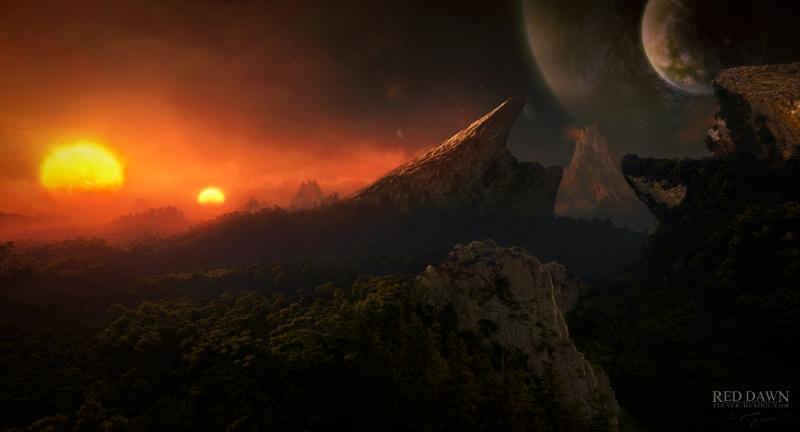
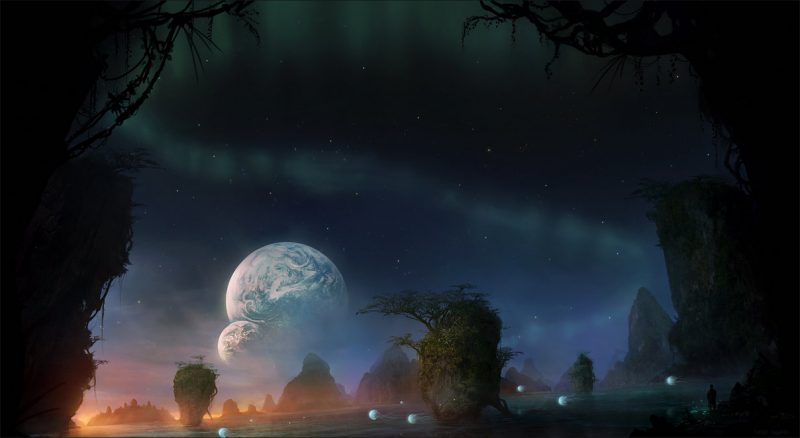
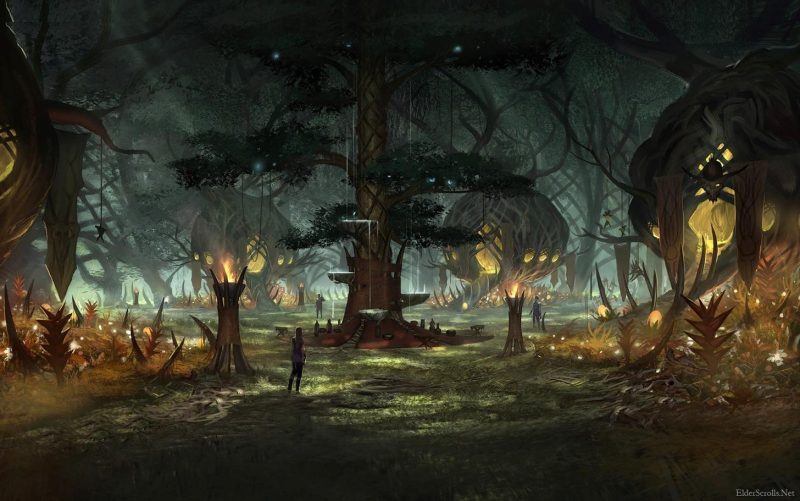
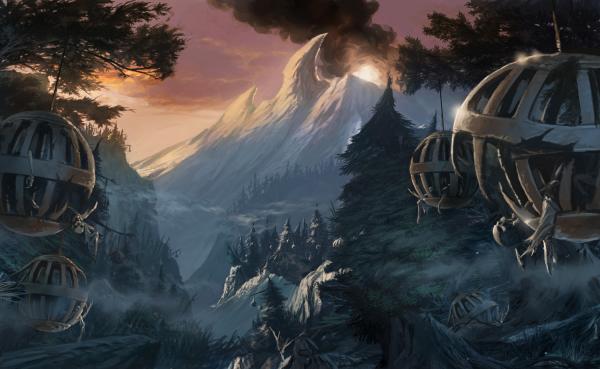
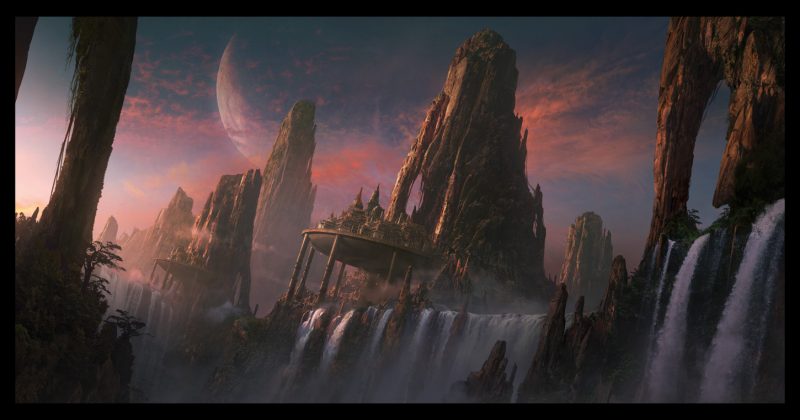

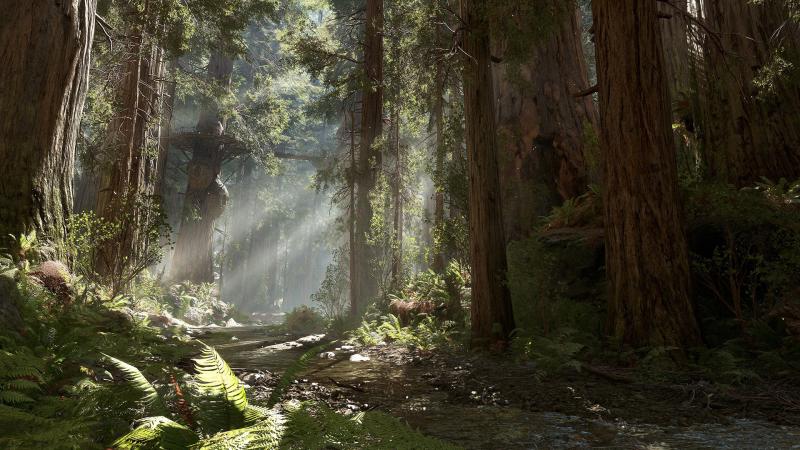
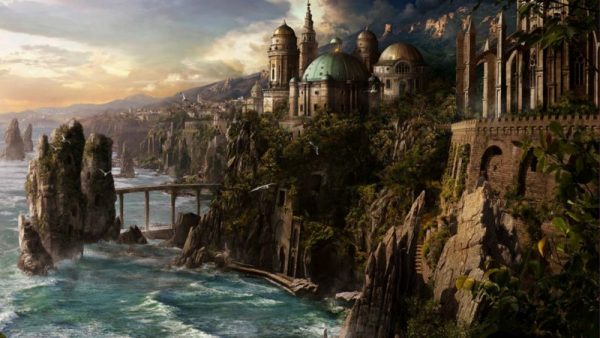
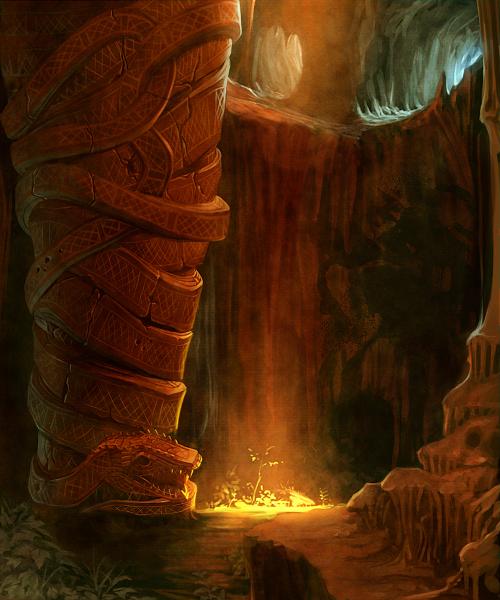
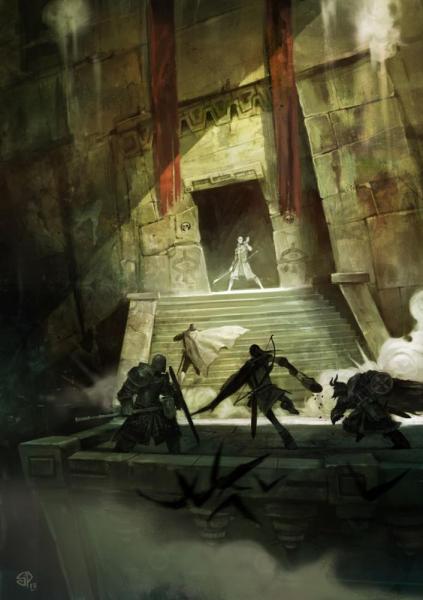
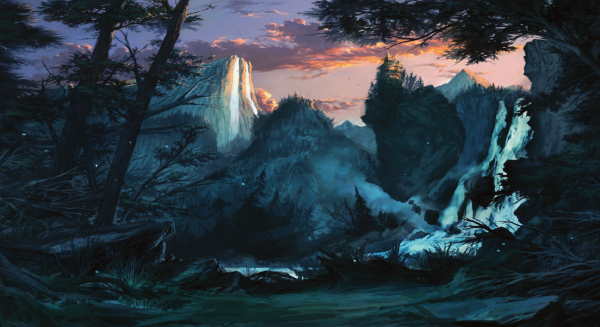
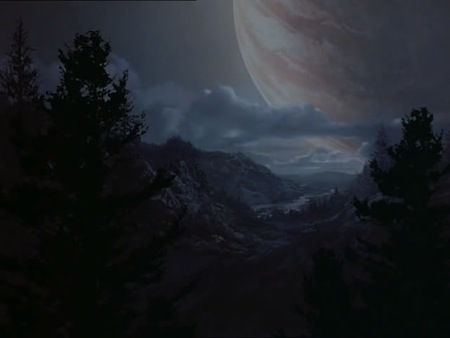
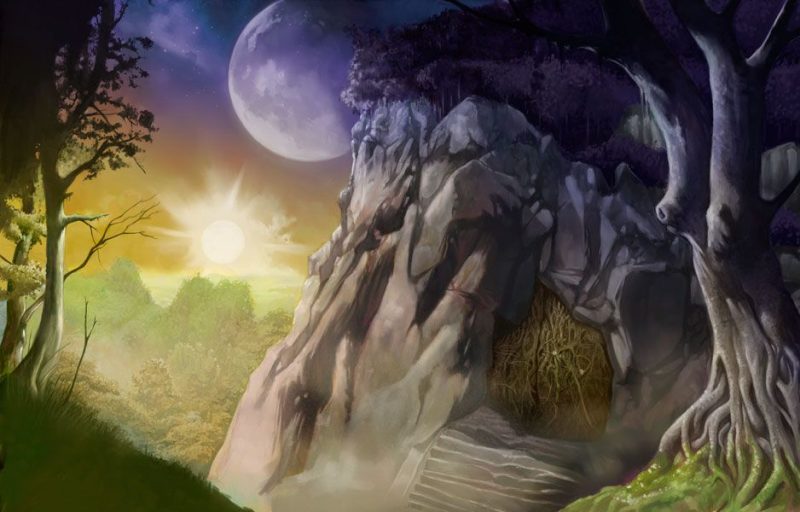
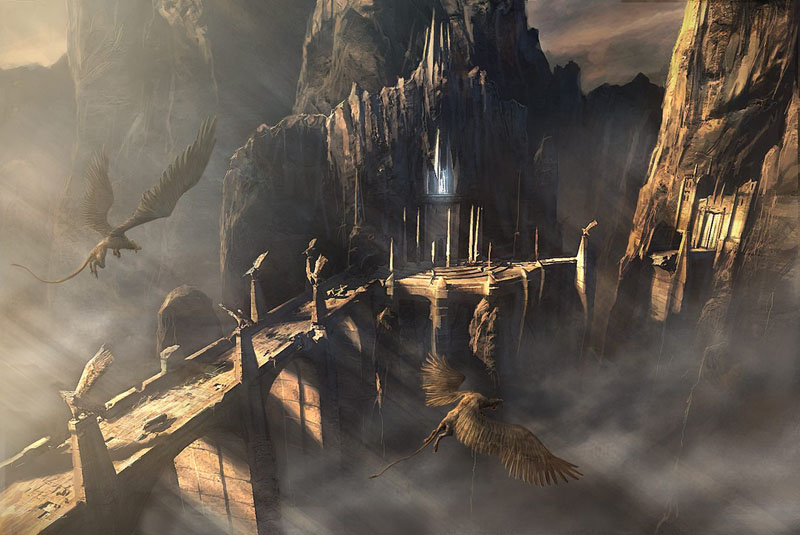
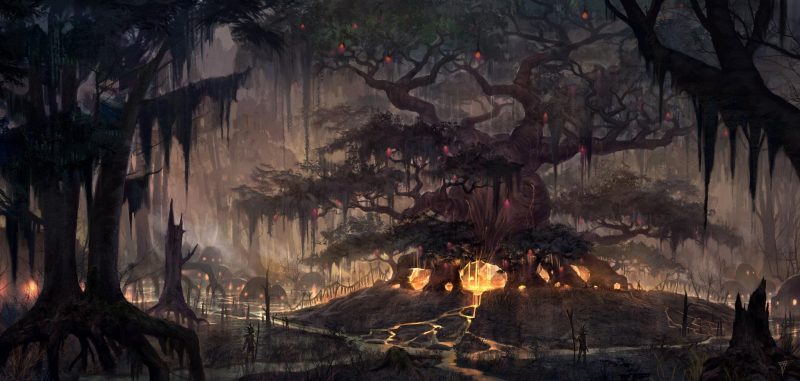
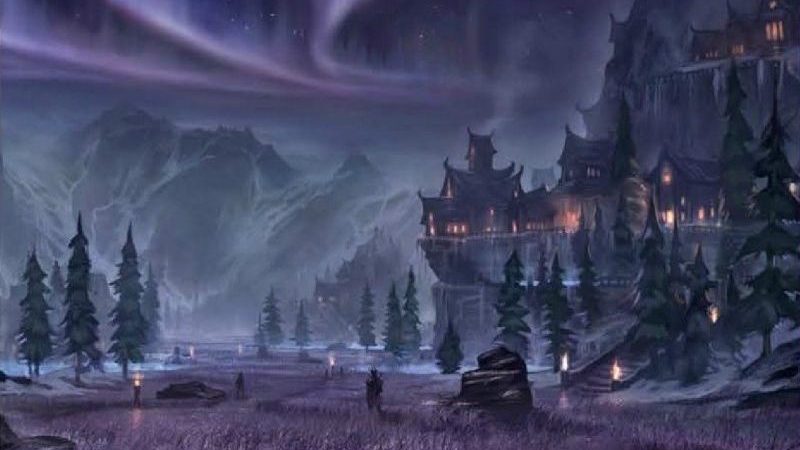
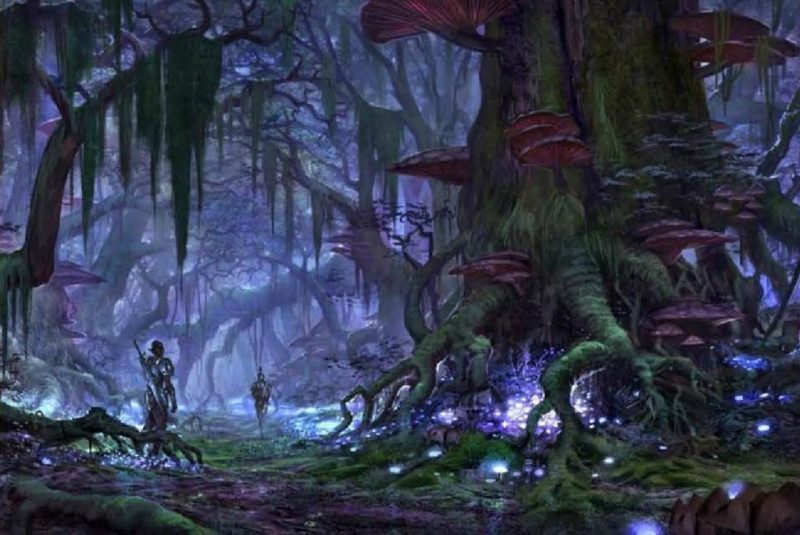
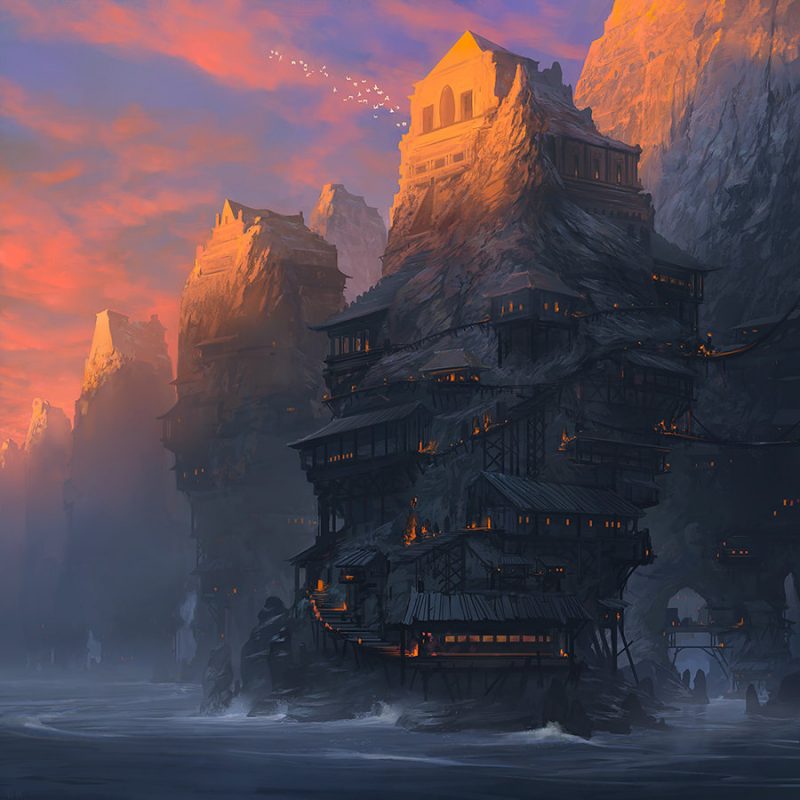
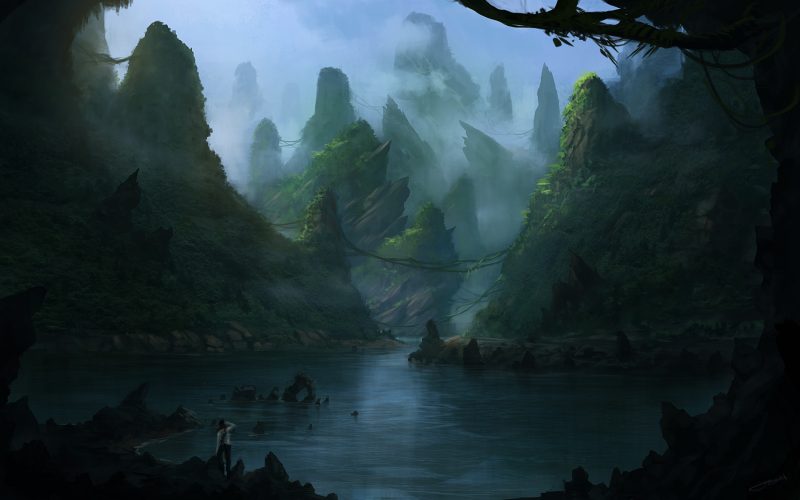
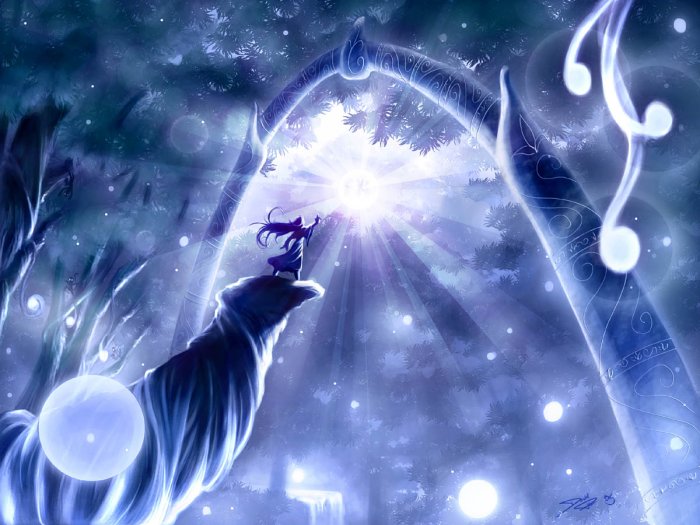
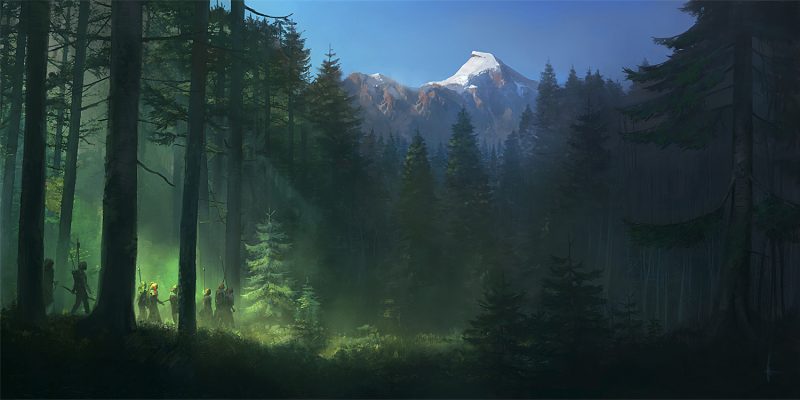
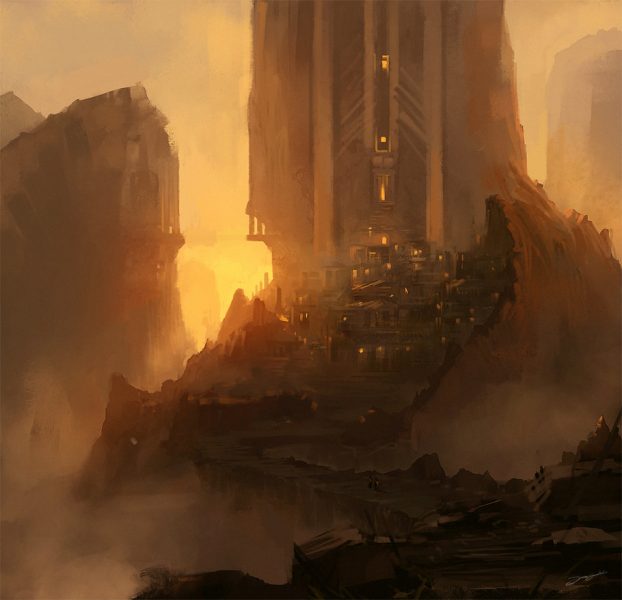
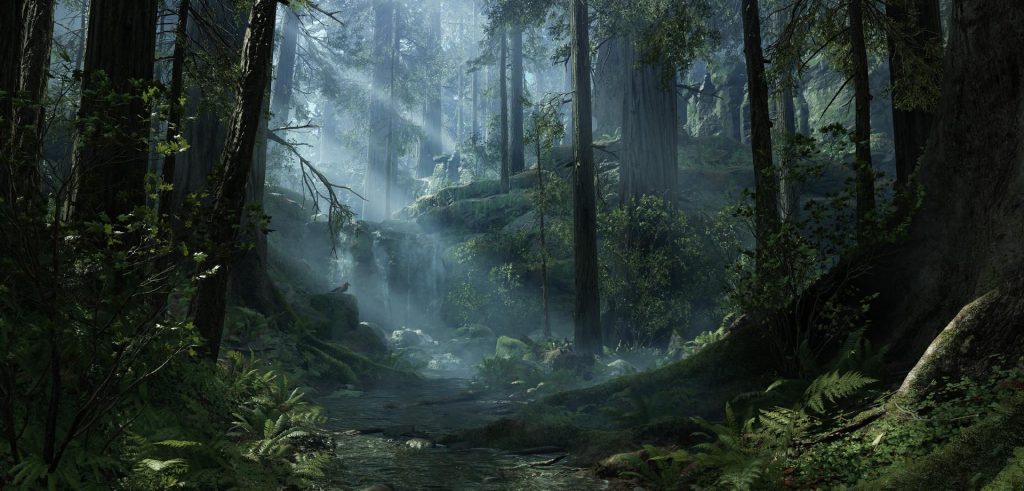
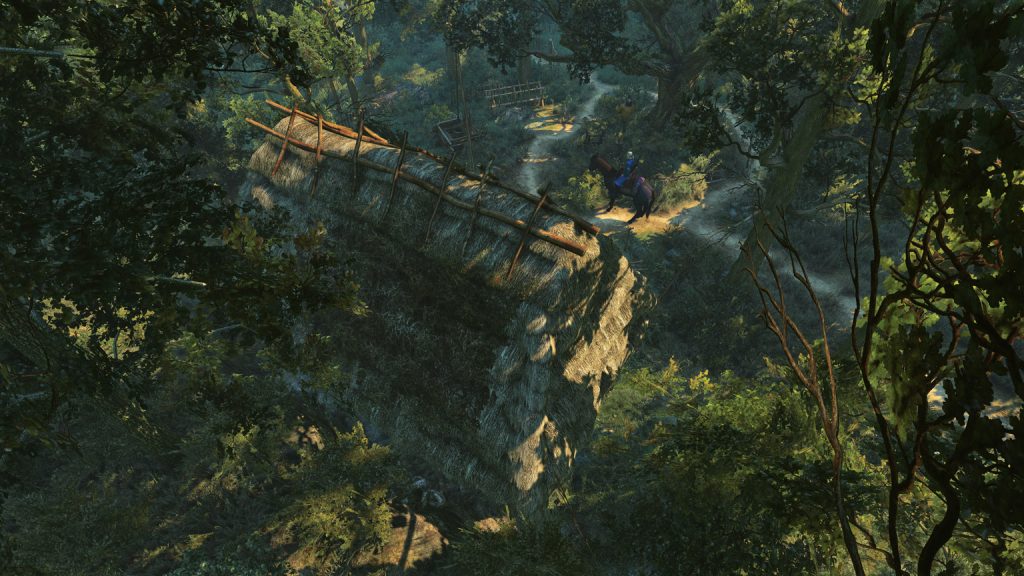
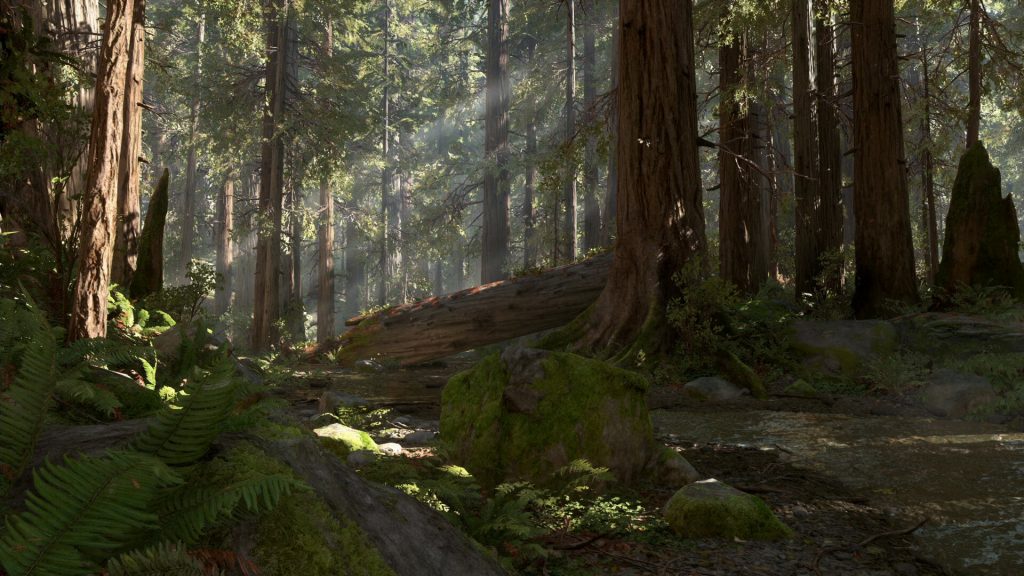
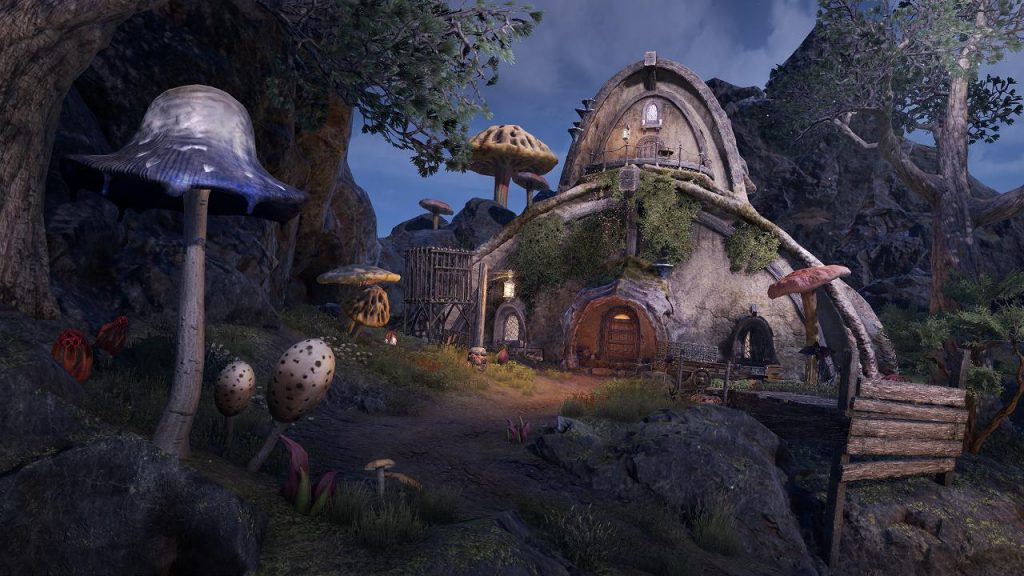
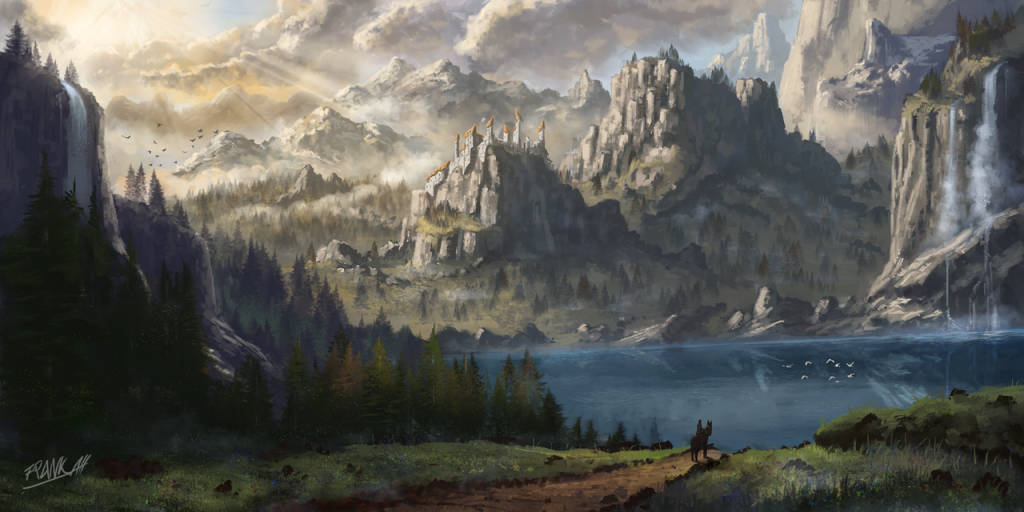
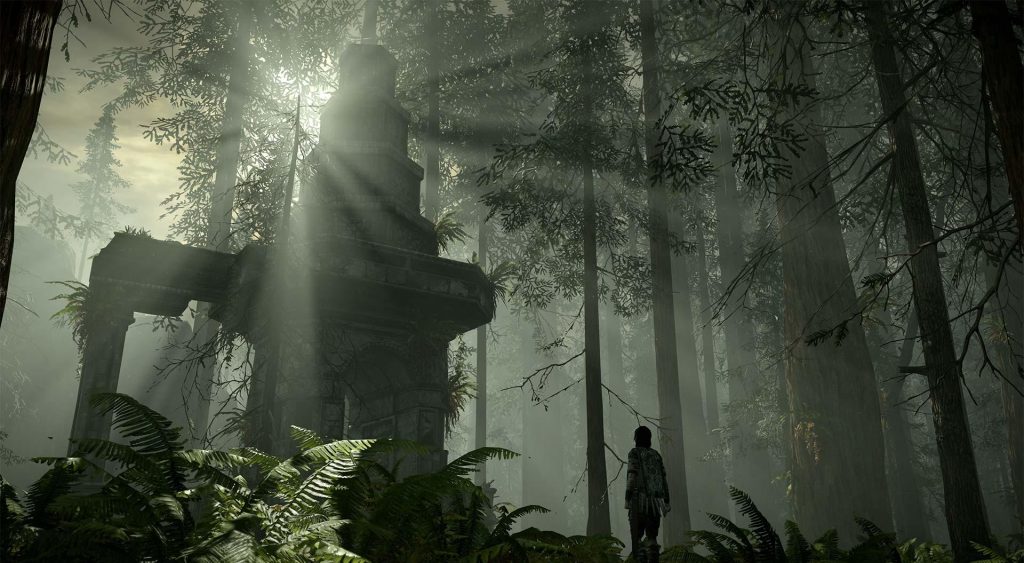
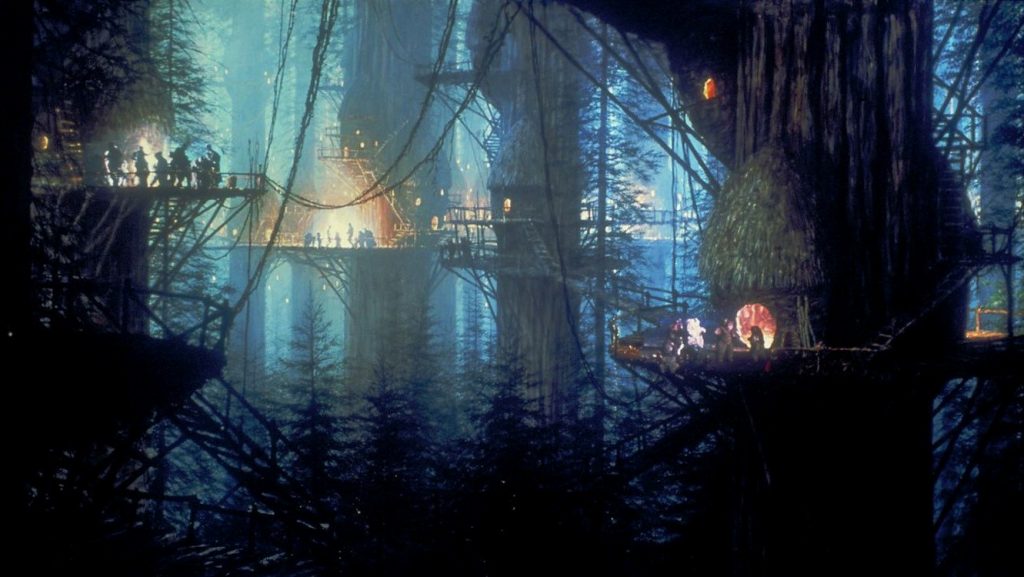
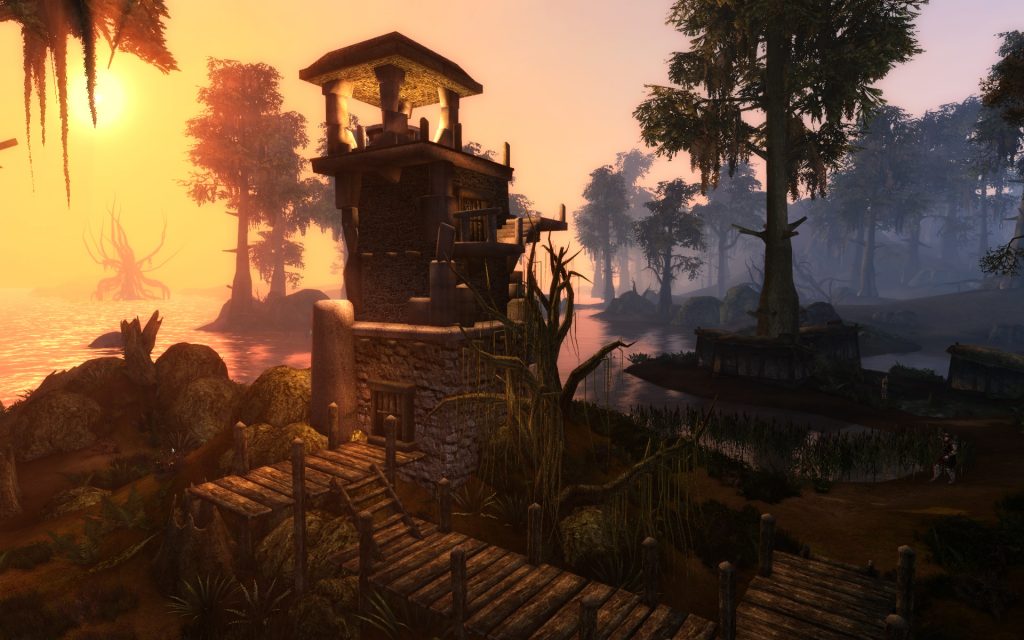
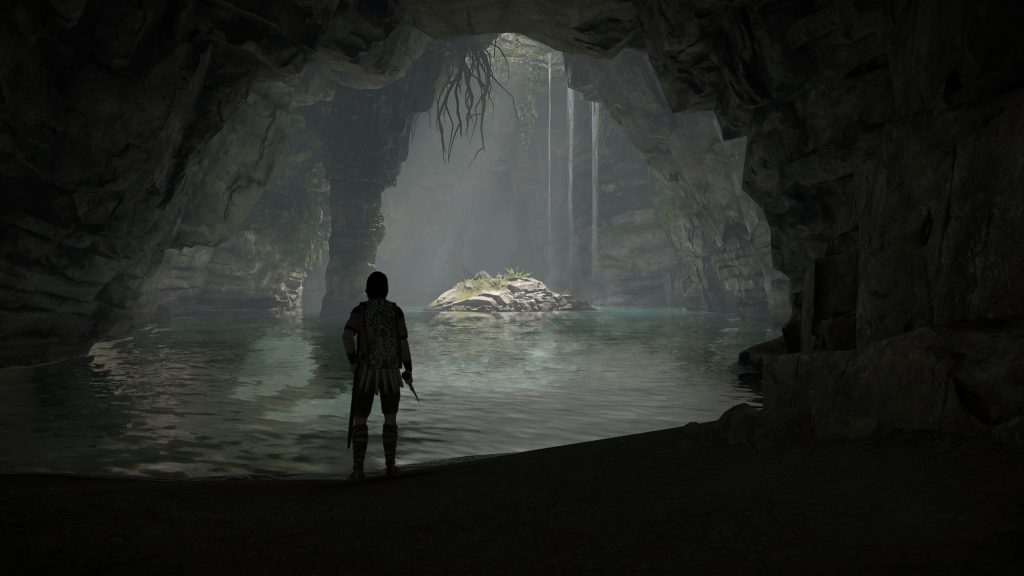
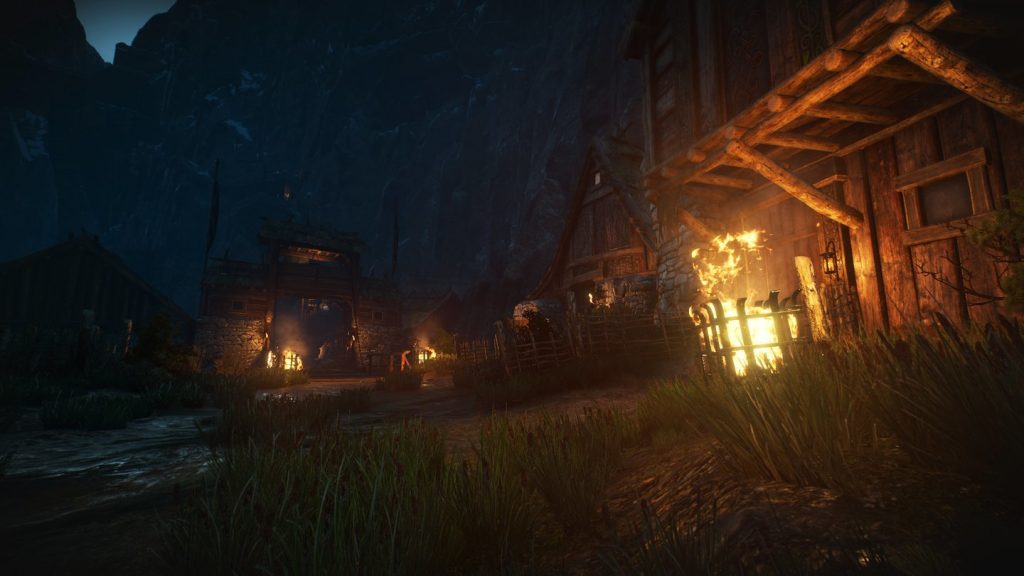
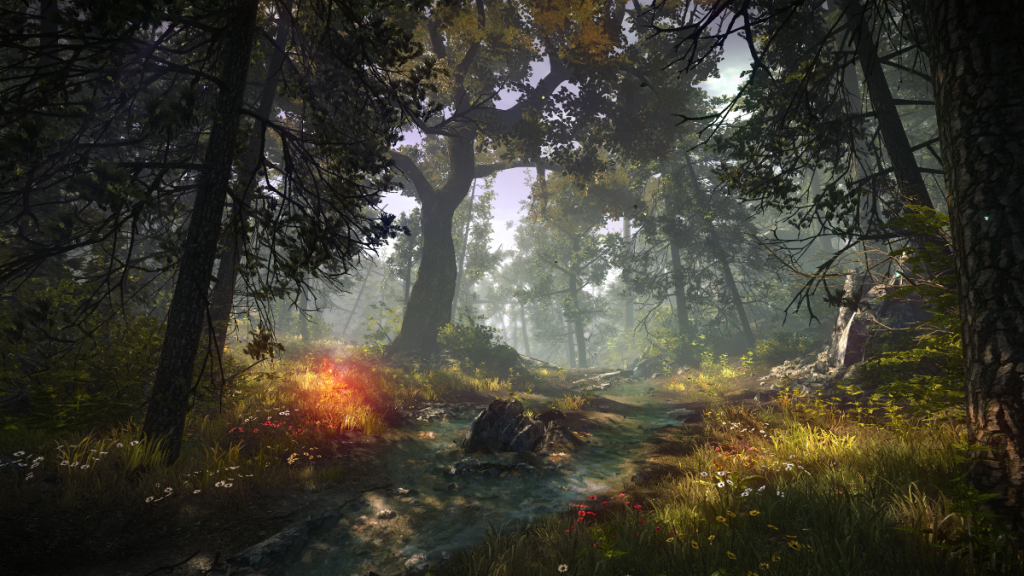
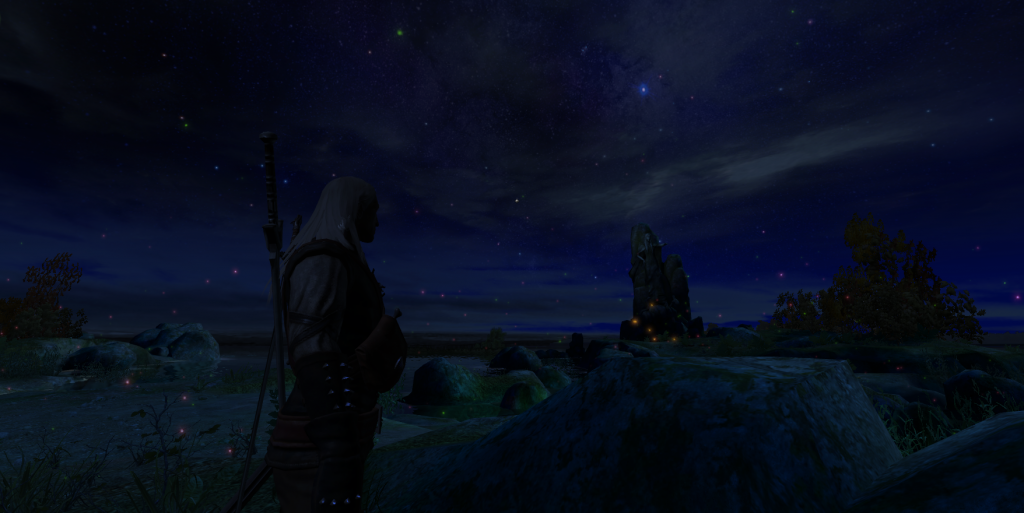
Are there any specific things you would be curious to read about? I still have a lot more vague ideas but I always need an excuse to get around and actually spell them out.We are not standing on the shoulders of giants, but on very tall tower of other dwarves.
Spriggan's Den Heroic Fantasy Roleplaying
-
2019-03-25, 10:21 AM (ISO 8601)Titan in the Playground


- Join Date
- May 2016
- Location
- The Lakes
 Re: Under the Moons of Kaendor - A Wilderness of 90s Sword & Sorcery (D&D 5th Ed./E6
Re: Under the Moons of Kaendor - A Wilderness of 90s Sword & Sorcery (D&D 5th Ed./E6
Love the images.
A chunk of the imagery that you post for this is spot-on for the "greco-sumerian" / "4th BCE" setting that I'm (slowly) working on.It is one thing to suspend your disbelief. It is another thing entirely to hang it by the neck until dead.
Verisimilitude -- n, the appearance or semblance of truth, likelihood, or probability.
The concern is not realism in speculative fiction, but rather the sense that a setting or story could be real, fostered by internal consistency and coherence.
The Worldbuilding Forum -- where realities are born.
-
2019-03-28, 11:59 AM (ISO 8601)Titan in the Playground


- Join Date
- Apr 2009
- Location
- Germany
 Re: Under the Moons of Kaendor - A Wilderness of 90s Sword & Sorcery (D&D 5th Ed./E6
Re: Under the Moons of Kaendor - A Wilderness of 90s Sword & Sorcery (D&D 5th Ed./E6
Some small thoughts on the nature of planes
I've been thinking a bit more about how I want to deal with the different worlds of mortals and spirits. I've long liked the idea of the physical world perceived by people only being part of the full world, and there actually being more space that spirits do perceive and can move through.
Another thing, that is already well established in the setting by this point, is that there is much more spirit activity in the wilderness than in the city states, and that reality can get very weird there.
I think the idea of the material plane actually having additional dimension really matches up very well with the effects of the etheral plane in D&D. The description is quite different, but what the ethereal plane is used for is to move through walls, avoid traps, and to move among people with no chance of being seen or physically touched. You get the same effect when you have characters move through additional spaces that can not be perceived or interacted with by normal people and that are left as gaps when people build walls in their own world.
This reminded me a lot of the Spectral Realm in Soul Reaver.
Spoiler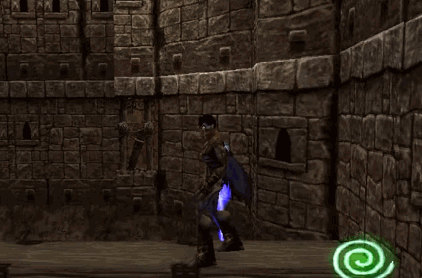
One thing that has bothered me for ages with D&D settings is that massive global cave systems aren't geologically possible. You can have giant cave systems in mountains, but they can't be connected to each other through passages well below sea level. There must be something supernatural in their existence. What if in this setting, the inside of the planet is indeed solid rock and lava, but it is these empty spaces in the additional dimensions that create the vast, seemingly endless networks of voids?
It would also mean that you can't use ethereal spells in the Realm Beneath. You are permanently in these other dimensions and there are no empty physical spaces into which you could exit. You could only leave by travelling to the surface first and find a natural cave.
I was thinking that this means that there are no magical shortcuts in the Realm Beneath, and this makes the only way of travel through these vast distances by foot. But nothing really says that the additional dimensions have to be "paralel" to normal space and distances. They could also be extremely coiled up, so that you could go "around" a physical barrier and actually have to move a shorter distance than tunneling "through" it. The distance between any two places in the additional dimension could be whatever you want, regardless of their distance in the regular physical world. When spirits seem to teleport across huge distances, they might really just be using the most efficient possible route.
What it doesn't adress is why the physical wilderness can be so dramatically different from the physical environment of the city states. But I think perhaps it doesn't have to. This could be a completely separate phenomenon, simply caused by spirits inside the city states not using their abilities to manipulate the environment as the fancy at any moment. Reality in the city states works the same way as in the wilderness, but the local god enforces that the spirits don't change the weather or play around with the flow of time as they please. And the god also compells monsters to avoid the area.We are not standing on the shoulders of giants, but on very tall tower of other dwarves.
Spriggan's Den Heroic Fantasy Roleplaying
-
2019-04-07, 01:58 PM (ISO 8601)Titan in the Playground


- Join Date
- Apr 2009
- Location
- Germany
 Re: Under the Moons of Kaendor - A Wilderness of 90s Sword & Sorcery (D&D 5th Ed./E6
We are not standing on the shoulders of giants, but on very tall tower of other dwarves.
Re: Under the Moons of Kaendor - A Wilderness of 90s Sword & Sorcery (D&D 5th Ed./E6
We are not standing on the shoulders of giants, but on very tall tower of other dwarves.
Spriggan's Den Heroic Fantasy Roleplaying
-
2019-04-14, 08:43 AM (ISO 8601)Titan in the Playground


- Join Date
- Apr 2009
- Location
- Germany
 Re: Under the Moons of Kaendor - A Wilderness of 90s Sword & Sorcery (D&D 5th Ed./E6
Re: Under the Moons of Kaendor - A Wilderness of 90s Sword & Sorcery (D&D 5th Ed./E6
Hm, just realized I rarely made any updates in the last month. I've mostly been dealing with crunch and adventure and campaign design, which doesn't create much worth posting. But spending a lot of time with rulebooks, old D&D modules, and examples from other people's campaigns always make me fall into a generic mindset and the destinctive spark of my own setting fading in my memory. That's one of the main reasons I am doing threads like this. To go back and remind myself of the key inspirations that made me excited to create all this.
Principles for running the campaign
The original idea for the setting was really a sense of atmosphere and style, and the dramatic tensions that can come out of them. And while of course it is absolutely mandatory for a highly stylized world to figure out the society, culture, politics, and religion of the people and the classes and equipment that are available to player characters (the Morrowind, Barsoom, Dune inspirations), that central atmosphere and style is all about being dwarfed by a vast wilderness of incomprehensible scale and age (the Planescape, Warcraft III, Star Wars inspirations). To make the setting work as intended, this aspect needs to be constantly represented in what players encounter and experience in actual play.
For that purpose, I have tried to work out some principles that inform how things should be presented to the players and placed within the adventures and the campaign. Much of this overlapps with the main concept points I wrote about in the first post.
Civilization is the Exception
This principle really is just a restatement of Points of Light. It's a great concept for worldbuilding, but when I think of it, what sticks in my mind is usually only the part about civilized areas being small. But making your duchies and city states small and creating a small scale setting isn't what it's really about. To me, the real significance of Points of Light is not the areas of safety and comfort, but the vastness of the dangerous and unknown that surrounds them. They are only points in the darkness that dwarfs them. The Shire in Middle-Earth is not a point of light. It is small and isolated, but well insulated from all the things that lie outside of it. The main thing that I want to get out of the Points of Light concept is an everpresent awareness by the people of Kaendor that their villages and fields are the annomaly. The Wilderness is not the stuff of fairy tales, but a looming presence always visible on the horizon, that actively needs to be kept at bay, through patrols, pallisades, and continuous religious rituals. I find myself better reminded of this fundamental aspect by referring to this principle as Civilization is the Exception.
In practice, this is something for me to keep in mind when creating NPCs, their motivations, and their priorities, and how they will react during play when the players talk to them about what they found in the wilderness or coming from it, and what they plan to do when they go there. Even when there are no physical barriers around the farmland, the people think in a mindset of living inside a wall of spears and prayer that protects them from the savage chaos that would otherwise drown them.
It also means to think of the various realms and city states not as kingdoms or nations, but in the way that sci-fi portrays colonies. On Kaendor there are no homeworlds, only colonies and outposts.
Nature always wins
Wilderness is the natural state of the world. It is the way things are meant to be. It is the ultimate god. Mortals can try to avoid its power for a time, but they can not defy it. Nature is the weather and the seasons, the soil, the growth and spread of trees, and all the beasts that inhabit the wilds. And it is also all the spirit gods of the forests and the sea. What the spirit gods want, they always get. Priests can plead with them, sacrifice offerings, and pledge their worship, and it might change their minds about how they direct the rivers and winds and where the beasts of the forest roam. But they can not be defied. When they have made up their inscruitable minds, the outcomes are inevitable. Mortals only have the choice to move aside or be crushed by the forces of nature. Trying to stop it will always only make it worse.
I see this principle applying primarily to setting up adventures. One option can be to have NPCs who think they can claim land and resources that has not been offered freely by the spirits and spelling doom for everyone who gets involved with it. The forest or the sea will punish them for it severely
The other option is to have the environment changing which is disrupting societies. People will have to adapt to the new conditions and that means conflict over the now diminished resources or people being forced to leave and finding new places to stay.
The only way to prevent such looming disasters is to somehow appease the spirit gods through special rituals or offerings. But trying to stop the wilderness from reclaiming what it one had by force will always fail.
The Forest eats Everything
This setting is one in which the people are deeply aware of the impermanance of everything made by mortals. Civilization is the Exception, not just in regard to territory, but also to time. Every city state will always only be temporary. The Sorcerers and God Kings of Senkand claim that their sorcerous powers can end this inevitability, but outside their royal cities the people are not convinced by it. There are too many stories of sorcerer lords thinking they could halt the passage of time and dooming themselves and their cities in the most horrifying ways. Everything made by mortals must eventually end, and then it will be burried by the forest or sink beneath the waves.
And once you get close to the edges of civilization, the evidence for it is everywhere. Ruins and fallen towers overgrown by trees and shrubs or sunken into the ground, the bones of huge beast covered in moss, and recent corpses found covered by fungi and crawling with insects. Bronze objects are always found turned deep green and fabrics almost completely disintegrated. Statues are broken or overgrown. If something is left behind by civilization, it is always found in the process of being consumed by the wilderness and disappearing into the earth, showing that eventually nothing will remain and it will be as if nothing was ever there.
People are like Weasels
In this world, people are not at the top of the food chain. Not even anywhere close. They are still predators, but one of the smaller ones. In the hierarchy of kill or be killed, people are the weasels. Cunning and viscious, but completely out of league with the real top predators. This informs how people in general, and warriors in particular see their position in the world. They have power and can bring down a large number of animals with ease, but they have to accept their position and the only way to survive in the presence of the kings of the forest is to not draw their attention and flee when they are noticed.
Nobody is coming to help
This is a consequence of Civilization being the Exception and limiting characters to 6th level. Every threat the players encounter, they will have to deal with themselves. If they can call on allies to bolster their own forces, they will still be the ones who will have to do the heavy lifting. They might be able to get one 6th level wizard to join them, but what can one 6th level character do where a group of four to eight 3rd level characters are powerless? Whatever obstacles the players encouhter, it is up to them alone to come up with some idea to deal with it. They can not pass it up the line if it seems to big. When setting up scenarios, success should not be required. If the players find themselves unable to stop the threat, their task becomes to mitigate the damage and save what they are able to. Retreating before the horrors of the wilds is an important part of life in this world. Escaping and saving what you can is an accomplishment and a success in its own right. (If the war seems lost, have NPCs approach the party to escort them to safety and make that a challenge in itself. Make the players feel like things would have turned out even worse without their intervention.)
Monsters are like Gods
I really like the approach "If it's too big to be natural, it ain't natural". Little critters can just be critters. But in a world where characters only advance up to 6th level, you very quickly get into the territory where creatures overpower any individual mortal hero. That's roughly around Challenge 5. Everything from there on is superhuman in power. With 6th level characters being exceptionally rare in this world, these creatures are worthy of reverence or even full worship. Within the culture of Kaendor, treants, genies, aboleths, stone giants, and unicorns are treated as minor gods. And in reverse, these beings should also see themselves as such in relation to mortals. (Unicorns already have legendary actions and lair effects. I should add that to the others as well.) Large groups of 5th and 6th level characters can still fight these creatures and defeat them. When that happens these will be legendary tales. I think any such creature should be fleshed out as an individual, perhaps with a distinctive appearance and a name given to it by the nearest living people. It's not just a giant, but the giant.
Random Encounters with Gods
Of course one can not have the party getting attacked by a monster that they have no chance to survive against. But there really are very few creatures that always try to kill all humanoids on sight. And at the higher tiers, few would even be interested in robbing them. When making random encounter tables, such creatures should be put into them right from the start. For this setting, I consider it completely appropriate to have 1st level characters spot a giant ahead and having the option to run for cover or approach it and ask for directions. I think this is cool and helps establishing the theme that Kaendor really is a world of spirits and giant beasts, with humanoids being only marginal critters who spend most of their lives in magical barrens.
Divinations
I have always had a very poor opinion of prophecies and seeing into the future. I still consider it really bad writing to tell the outcome in advance or make prophecies that only make sense afterwards. But I really like divination and oracles in general. Being a setting full of spirits, and the spirits controlling everything in the environment, I think people in Kaendor should be consulting the spirits all the time. Especially when making important descisions and when heading out into the wilderness. The spirits in this world are not omniscient and don't know for certain what will happen in the future either. But the spirits are aware of many more things than mortals are and have a much broader prrspective on things. Divinations allow priests to get a forecast of the future or a better understanding of the presence. It works quite well for general developments, but can't really tell many specifics with any degree of accuracy. The spirits can warn in advance that a battle will happen, and they can estimate which side has the better odds, but they also don't know what exactly will happen.
Relics
I generally lean towards having few magic items and give them powers that make a real difference. But for this setting, I feel it is appropriate to make frequent use of relics that have big importance to the events of adventures but are not really very useful as special equipment for PCs. I am thinking mostly of objects that can keep cities snd villages safe from disasters, or have the ability to cause draught or make all the fish disappear. These relics contain remnants of the powers of old spirits and gods, which give priests and witches some influence over things that are usually the domains of spirits. They are great objects of conflict and means to deal with emergencies, and they reflect that everpresent dominance that spirits have over the environment.We are not standing on the shoulders of giants, but on very tall tower of other dwarves.
Spriggan's Den Heroic Fantasy Roleplaying
-
2019-04-14, 11:33 AM (ISO 8601)Titan in the Playground


- Join Date
- Apr 2009
- Location
- Germany
 Re: Under the Moons of Kaendor - A Wilderness of 90s Sword & Sorcery (D&D 5th Ed./E6
Re: Under the Moons of Kaendor - A Wilderness of 90s Sword & Sorcery (D&D 5th Ed./E6
Notes on Priests
After having spend more thought on how I think about magic in the setting, max level, NPC spellcasters, and how much I want to bother with mechanics, I think the role of priest characters might actually be served just as well, if not better, by regular clerics instead of my customized divine lore bard.
When in doubt, I prefer to use default options from the PHB without tinkering, and I think it might actually be mechanically simpler than a lore bard.
Clerics of Livas, Idain, and Heotis, the gods of Herds, Fields, and Homes, are Nature Clerics.
Clerics of the Sea God and the Storm God are Tempest Clerics.
Sakaya Clerics are Knowledge Clerics.
Priests of Temis, the Moon goddess, are Diviner or Enchanter Wizards.
Priests of the God Kings are Fiend Warlocks.
Wilder Shamans are Land Druids.
I am also very much thinking about changing turn undead to turn spirits. Instead of weak undead being destroyed, weak spirits are turned for a full day.
Village priests are usually simple acolytes, but they gain magical powers from their shrines. Shrines are sacred places around magical springs, trees, boulders, or fissures in the rock, or a crafted idol that holds a fragment of one of the local gods of the land. The sacred site is permanently under the effect of a magic circle that either has a 60 ft. diameter or conforms to a shrine building or cavern up to the same size. While inside the sacred area, the priest can cast the following spells:
3/day - command, cure wounds, detect evil, detect poison
2/day - augury, calm emotions, lesser restoration
1/day - remove curse, sending
1/week - divinationLast edited by Yora; 2019-04-14 at 11:34 AM.
-
2019-04-14, 02:46 PM (ISO 8601)Bugbear in the Playground


- Join Date
- Aug 2010
 Re: Under the Moons of Kaendor - A Wilderness of 90s Sword & Sorcery (D&D 5th Ed./E6
Re: Under the Moons of Kaendor - A Wilderness of 90s Sword & Sorcery (D&D 5th Ed./E6
The ceremony magic from 2E might be worth perusing for ideas.
-
2019-04-18, 09:03 AM (ISO 8601)Titan in the Playground


- Join Date
- Apr 2009
- Location
- Germany
 Re: Under the Moons of Kaendor - A Wilderness of 90s Sword & Sorcery (D&D 5th Ed./E6
Re: Under the Moons of Kaendor - A Wilderness of 90s Sword & Sorcery (D&D 5th Ed./E6
Trade Goods weights and prices
I converted the trade goods from the PHB to my Encumbrance system. (Weight in pounds rounded up to the next multiple of 10, then divided by 10, to get the required inventory load. Items of less then 1 pound cause no load. Carrying capacity in pounds divided by 10 to get a character's inventory capacity.)
Item Quantity Price Encumbrance Sack of grain 30 lb. 3 sp 3 Sack of flour 30 lb. 6 sp 3 Pouch of salt 5 lb. 2 sp 1 Pouch of ginger 5 lb. 50 sp 1 Pouch of cinnamon or pepper 5 lb. 100 sp 1 Pouch of cloves 5 lb. 150 sp 1 Pouch of saffron 5 lb. 750 sp 1 Keg of ale 20 l 10 sp 4 Barrel of ale 200 l 100 sp 40 Keg of wine 20 l 20 sp 4 Barrel of wine 200 l 200 sp 40 Bottle of expensive wine 1 l 100 sp 1 Keg of expensive wine 20 l 2,000 sp 4 Canvas 6 sq. yd. 6 sp 1 Cotton cloth 20 sq. yd. 100 sp 1 Linen 12 sq. yd. 600 sp 1 Silk 24 sq. yd. 2,400 sp 1 Iron 5 lb. 5 sp 1 Copper 5 lb. 25 sp 1 Tin 5 lb. 100 sp 1 Silver 5 lb. 250 sp 1 Gold 5 lb. 2,500 sp 1
I decided to make potions and poisons a big part of the setting (taking over the role of scrolls), including a good number that will be more worth to sell than use by PCs. I plan to make a price list for those later.We are not standing on the shoulders of giants, but on very tall tower of other dwarves.
Spriggan's Den Heroic Fantasy Roleplaying




 Reply With Quote
Reply With Quote
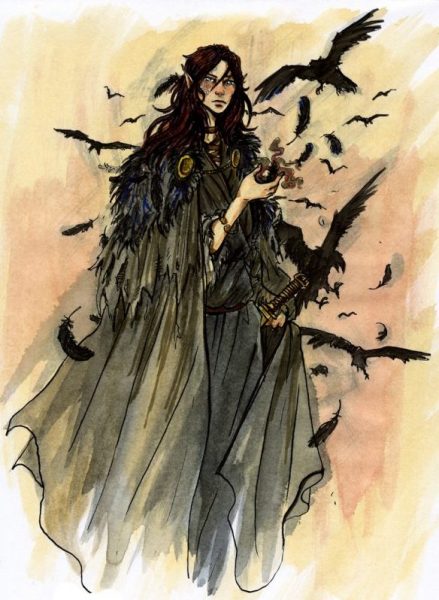
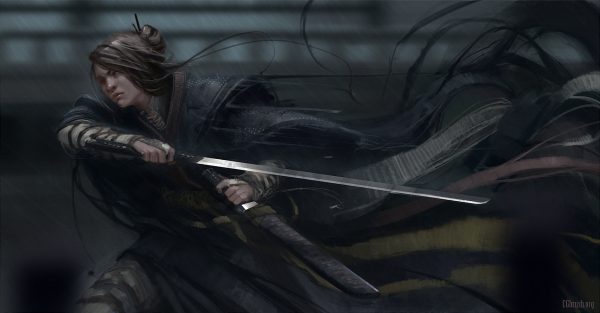
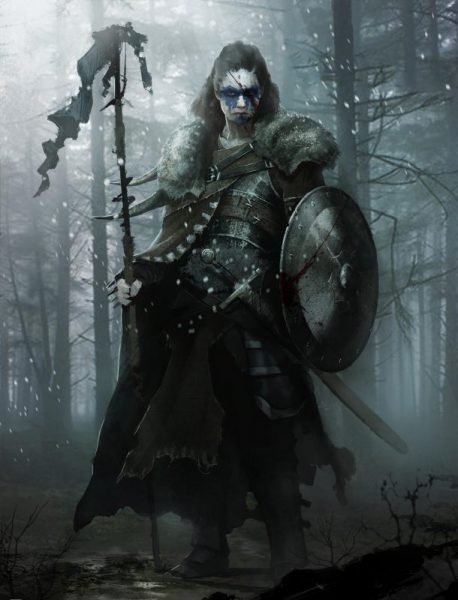
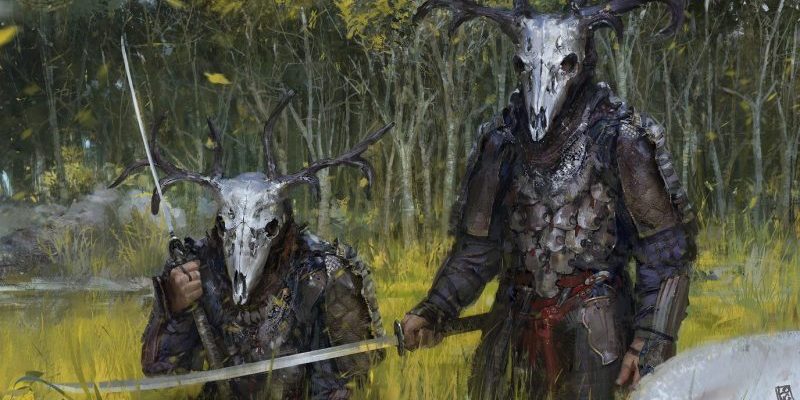
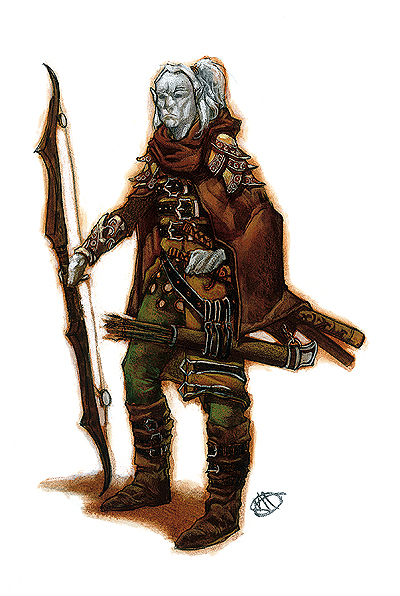
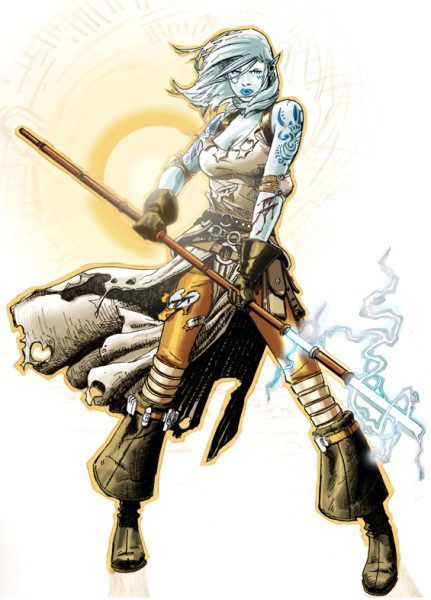
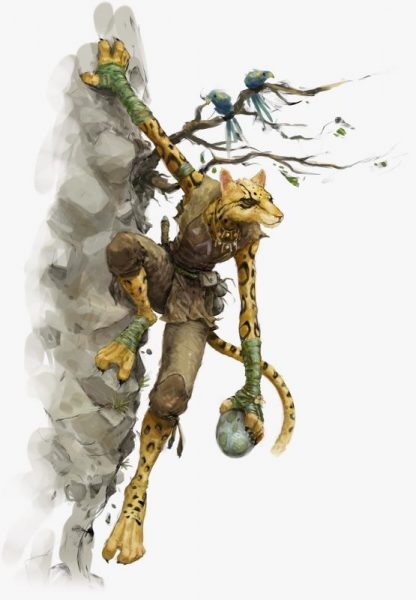
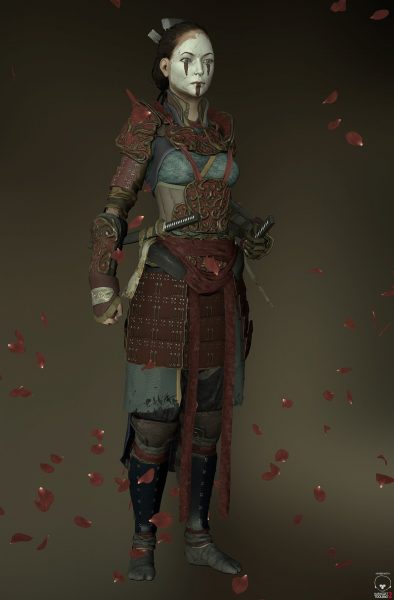
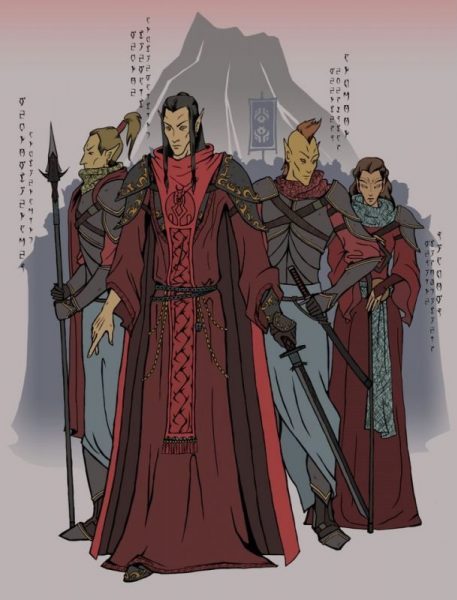
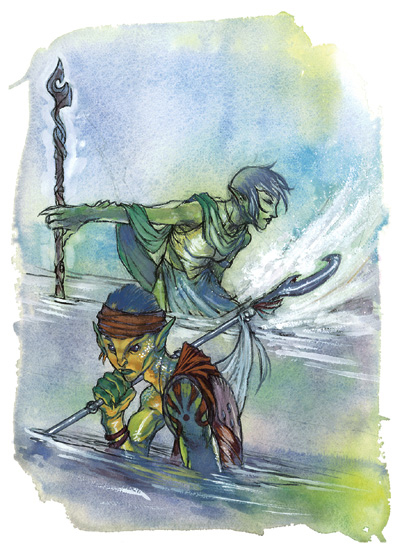
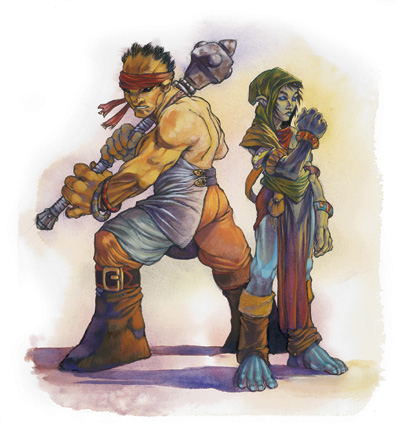
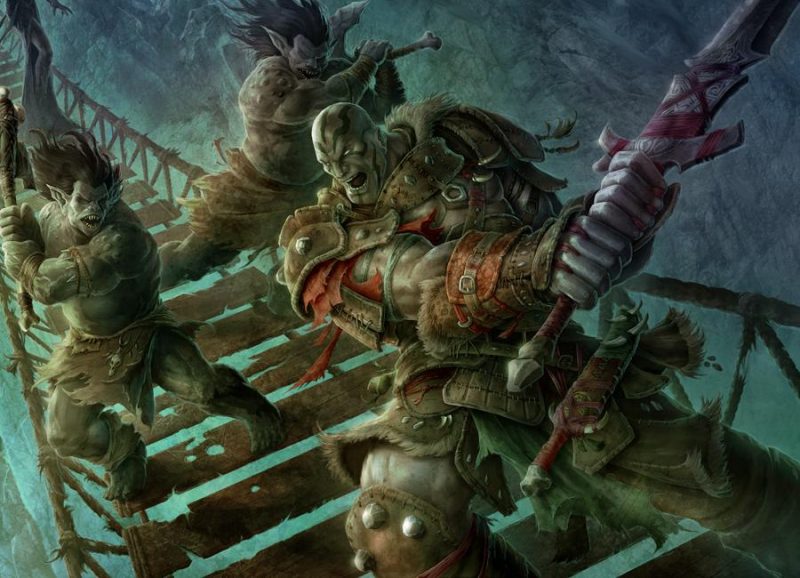





 RSS Feeds:
RSS Feeds: 

